Aperture's Blog, page 41
June 8, 2022
How the Architect Frida Escobedo Thinks About Art and Design
In March 2022, the Metropolitan Museum of Art, New York, announced the selection of the architect Frida Escobedo to design the museum’s new modern and contemporary art wing. Here, we revisit an interview with Escobedo in the magazine’s “House & Home” issue, originally published in spring 2020.
When she landed the commission to design London’s Serpentine Pavilion in 2018, Frida Escobedo established herself as a young architect with a compelling vision. By that time, she already had a number of accomplished projects under her belt, from the renovation of La Tallera, the former studio of the painter David Alfaro Siqueiros turned public art gallery, to Casa Negra, a house featuring wide-screen views of her native Mexico City, designed for a photographer and inspired by the concept of a camera obscura. Escobedo’s works—often made with raw materials like perforated concrete blocks—opt for flexibility and a restrained yet daring form to create simple visual gestures.
Though Escobedo says she was too intimidated to apply to art school, deciding on an architecture path instead, her creative process is close to that of a visual artist who lets her pieces speak for themselves. But she also has an eye on the cultural landscape in which her work exists—Mexico’s social divisions and class dynamics have often been a concern in her investigations of buildings and housing—as well as on the storied history of built environments in her home country. “Mexican architecture is informed by its context,” she has remarked. “I think it’s more like a spirit rather than a style.” Here, she speaks about transforming lives through design and space, and her own spirit of invention.
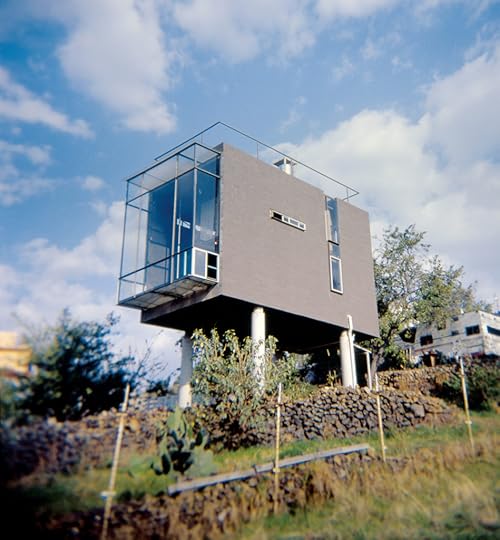 Frida Escobedo, Casa Negra, Mexico City, 2006
Frida Escobedo, Casa Negra, Mexico City, 2006Photograph by José Fernando Sánchez. Courtesy the artist
Alejandra González Romo: One of your first projects was the Casa Negra (2006) on the outskirts of Mexico City, which resembles a dark camera. Is there any connection between the concept for that house and that of an old camera?
Frida Escobedo: The first two projects I worked on were house renovations, so this was indeed the first one I developed from scratch. I was twenty-three back then, fresh out of college, and a small, very simple house had to be built with limited resources. The idea was to build a one room studio with a mezzanine as a quick solution. The owner, who is a photographer, had inherited that plot on the outskirts of Mexico City, on the road to Cuernavaca. A small space, it had to be made permeable to light, and the solution was to build a huge window looking out onto the city, which frames the view. It is a black box standing on columns. One enters by a bridge. When entering the box, one immediately sees the landscape, a mixture of forest and city. At night, especially, the box creates a camera-obscura effect with the city lights visible in the distance.
González Romo: How would you describe the way natural light comes into the space?
Escobedo: The light comes in from the north. Therefore, the house works perfectly as a studio. The only risk was that the house turns out to be very cold. For this reason, we installed an L shaped skylight, so it has an additional light inlet from the south, thus warming it a bit. We painted it dark gray—almost black—so that it attracts more light and heat. It also has a ramp that goes from the kitchen up to a terrace. Therefore, the social space is doubled, the peripheral view from the roof offering a whole different experience. It is indeed a type of camera aiming at the city, but, at the same time, it’s spatially functional. Also, its position and angle resemble the way any photographer would choose to set a tripod.
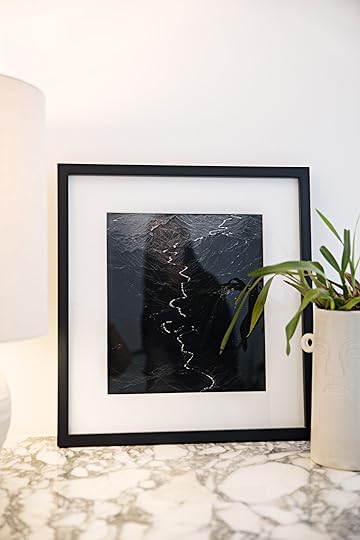 A photograph by Frida Escobedo’s sister, Ana Gómez de León, at Escobedo’s home, Mexico City, 2019
A photograph by Frida Escobedo’s sister, Ana Gómez de León, at Escobedo’s home, Mexico City, 2019Photographs by Yvonne Venegas for Aperture
 Frida Escobedo’s home, Mexico City, 2019
Frida Escobedo’s home, Mexico City, 2019 González Romo: Looking at the documentation of your projects, I can see the signature of the photographer Rafael Gamo is on practically every single piece. What is the role of photography in your creative process?
Escobedo: The process behind architecture is overflowing with images. But if we talk of photography’s recording value, my interest is in having documentation done on more than one occasion. I like working with Rafael, because he always comes back to the sites to capture the way a project evolves. Neither of us is interested in the perfect picture. All we want is a living record. Even though, in many cases, owners make it difficult to keep that record, I am interested in capturing how each construction ages.
González Romo: What other photographers have influenced your way of seeing?
Escobedo: Josef Koudelka, Sebastião Salgado, Graciela Iturbide, Manuel Álvarez Bravo, and Gerhard Richter—their interventions with photographs. My sister Ana Gómez de León is also a photographer. A photograph of hers sits by the entrance of my house. I forced her to give it to me as a present. She took the photograph from a plane, where you can see a river crossing the mountains. When I saw it, I thought of Salgado and his endless journeys to shoot such images. This one was taken through a filthy window using an iPhone. I love it. It is my favorite photograph. Here, in my office, I have a postcard taken by the architect Mauricio Rocha, in 1988. It is an image of a wooden wagon with glass doors reflecting a lake. It is a photograph he took at a very young age, and I interpreted it as some sort of acknowledgment of what I was doing in my first years as an architect.
I recently saw Hans Haacke’s exhibition at the New Museum, in which he analyzes the relationships between power, real-estate value, and built space in New York. His research draws lines between the Shapolsky family and 142 buildings across the city, while keeping a record of each property’s square meters, its conditions, its owner, et cetera. It is well known that power concentrates in very few families around the world; yet, visualizing it in such a clear way takes the subject out of the abstract. A similar analysis, but one made indoors, is Daniela Rossell’s series Ricas y famosas (Rich and famous, 1994–2001), where she shows the interiors of immense mansions in Mexico, unveiling the tastes and personalities of women who may lack anything but money. It is a portrait of society through space and architecture from an intimate perspective.
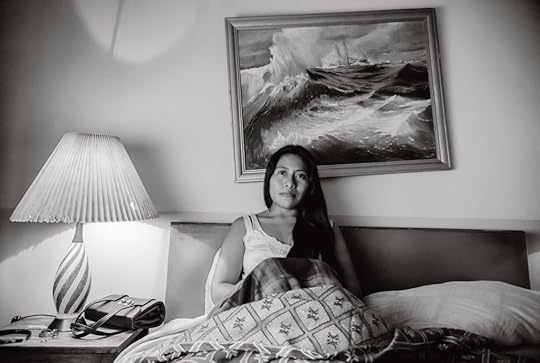 Carlos Somonte, Still of Yalitza Aparicio in Roma (Alfonso Curarón, dir.), 2018
Carlos Somonte, Still of Yalitza Aparicio in Roma (Alfonso Curarón, dir.), 2018Courtesy Netflix
González Romo: Haacke’s piece sounds similar to what you achieved with your research project and book Domestic Orbits (2019), based on the fact that there are more than 2.4 million domestic workers in Mexico and that 90 percent of them are women. It is a cartographical analysis of the way the domestic sphere is configured around race, class, and gender. What triggered your interest in this subject?
Escobedo: Few people know that Luis Barragán’s domestic worker still lives in his house, more than thirty years after Barragán’s death. As part of his will, he decided she could continue living there for the rest of her life. We are talking about an iconic house built by a Pritzker Prize winner, which currently functions as a museum but has a hidden configuration: a house within a house that no one knows about and that is designed not to be discovered by visitors. Nonetheless, if you pay attention, there are hints of that invisibility everywhere. There are bells under the tables to communicate with that other zone, and there are secondary routes that allow staff to pass through the main areas without being seen.
This analysis of Casa Barragán was the first exercise. Three years later, we decided to expand our research, as these signs of invisibility can be seen in architecture on different scales. In the building where I live, there are also rooms for the service staff that are completely invisible. Walking around the city, we see massive apartment buildings with wonderful views, built by renowned architects. But what invisible architecture lies behind?
I don’t think there should only be one concept of home. I think the actual problem is the will to standardize.
We also analyzed the house where Alfonso Cuarón’s 2018 movie Roma was filmed, which has a little tower where the character Cleo [the family’s domestic worker] lives. Another very interesting case is a building from 1957 in Polanco [a neighborhood in Mexico City], where the service staff rooms are in a separate building a few blocks away. These are very small dwellings built around a main courtyard, where the service staff can have a private life and bring visitors if they so wish, in addition to having a spatial separation between work and leisure. That possibility has almost completely disappeared within one generation, and current domestic workers often commute up to four hours every day from the outskirts of the city to their workplaces.
 Frida Escobedo, Mar Tirreno, Mexico City, 2016–19
Frida Escobedo, Mar Tirreno, Mexico City, 2016–19Photograph by Rafael Gamo. Courtesy the artist
González Romo: You live in a building designed by Mario Pani, one of the most widely renowned architects in Mexican history, and a representative of what was perhaps the golden age of architecture in the country. What reflections do you have from living in a space like that?
Escobedo: Two years ago, I went through a separation and moved into this apartment, although it was rather by chance. This is a building from 1956, a time when many buildings full of two-hundred-square-meter apartments were built. It is a space with a history, which means it has been modified before. In the past, it was divided, but now it consists of rather open spaces. I have very few pieces of furniture: one Wassily chair that my father gave me when I first went to live by myself, and another we made at the office, which is a reinterpretation of the Donald Judd chairs, but made of volcanic rock. It’s more of a joke. The table is attached to the wall, as was Barragán’s, and the bookshelves surrounding the space are very low, so they can be used as seats when throwing a party. There are very few things, but I like the space to look empty, more like a dance floor. My walls are also clear. I do not like hanging pictures on the wall, as it looks way too formal to me. I prefer to lean them against bookshelves or other objects and move them around from time to time.
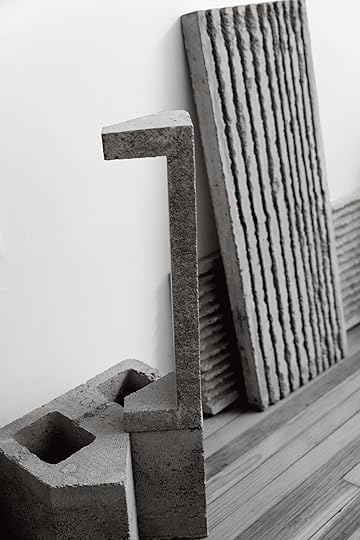 Objects in Frida Escobedo’s home, including concrete panel research and design models, Mexico City, 2019
Objects in Frida Escobedo’s home, including concrete panel research and design models, Mexico City, 2019Photographs by Yvonne Venegas for Aperture
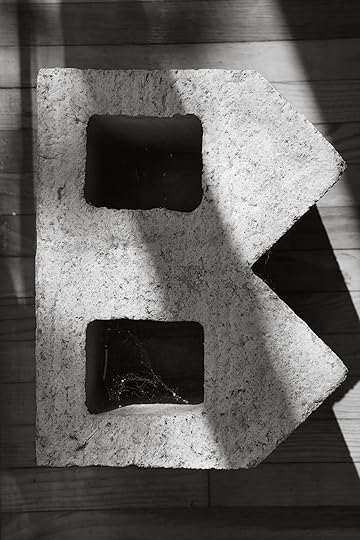
González Romo: From an architectural point of view, what is your idea of a home?
Escobedo: I don’t think there should only be one concept of home. I think the actual problem is the will to standardize. There are many configurations of housing and family that are not considered when developing real-estate projects. They insist on selling us as many labels as possible in spaces that are increasingly small: a living room, a dining room, a kitchen, two bedrooms, two and a half bathrooms … and that nonsense walk-in closet, as if that were indeed going to increase our quality of life. Why doesn’t anyone go for, say, large, flexible areas for people to transform freely?
Related Items
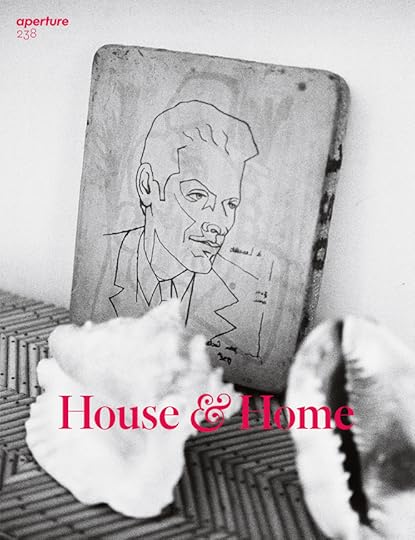
Aperture 238
Shop Now[image error]
Aperture Magazine Subscription
Shop Now[image error]González Romo: You built a house for the Ordos 100 project (2008), organized by Ai Weiwei and Herzog & de Meuron. For this, one hundred architects from twenty-seven countries were invited to build a thousand-square-meter luxury villa in the Mongolian desert. You also designed a small house as part of a program for the Mexican government that sought low-cost housing alternatives for disadvantaged people. How did you respond to such opposite concepts?
Escobedo: For the Ordos 100 project, the challenge was to rethink housing and come up with an experimental proposal to be developed in a rather inhospitable territory. There were guidelines to be followed—some interesting, some obvious. The idea was to create weekend houses. Each one had to have a safe, a cellar, a pool, et cetera. What caught my attention was the fact that they asked for two kitchens: one closed with storage space and the other open, like an island. After talking to the organizers, I understood that the first kitchen was for the service staff, and I realized that they would live there full-time. Therefore, in the remaining space, I designed an independent house for the cleaning staff, cooks, gardeners, et cetera, where they would have their own courtyards, linked to the main construction. For that project, enormous, outrageous houses were designed. I was the youngest among a hundred architects, and my house was the smallest one.
 Objects in Frida Escobedo’s home, including concrete panel research and design models, Mexico City, 2019
Objects in Frida Escobedo’s home, including concrete panel research and design models, Mexico City, 2019Photographs by Yvonne Venegas for Aperture
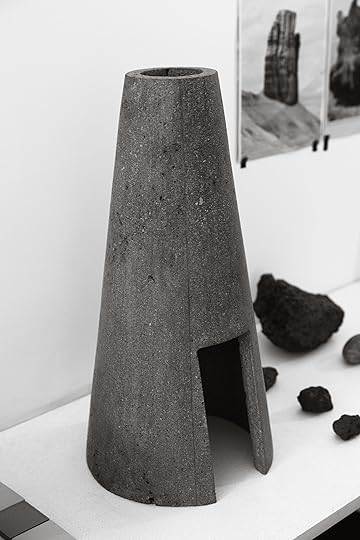
For the INFONAVIT (Institute of the National Fund for Workers’ Housing) project (2019), the challenge was quite the opposite: designing with minimal resources and in a reduced area. I was invited, together with other architects, to design a social housing prototype. We created one that would adapt both to a rural area and to an urban context. It is a very flexible vaulted house, which in a rural context can also be adapted as a barn. As for an urban environment, these arches integrate very well with the local architecture, as they are part of the architectural language of that city, Taxco. On a certain level, it is similar to the Casa Negra, which we discussed at the beginning, because it was an open space with a mezzanine offering easy and economical possibilities of expansion without the need for skilled labor. The idea is that instead of repeating that design ad nauseam—as has been the case with many social-housing projects, and I think it is a big mistake to believe that this configuration should be massive and standardized—families living in contiguous houses would have common, adaptable courtyards and spaces that would contribute to building communities.
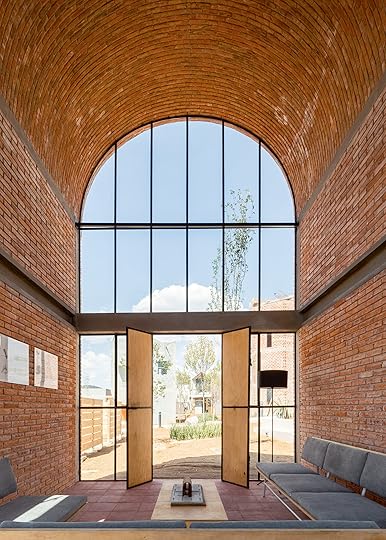 Frida Escobedo, From Territory to Inhabitant, INFONAVIT, Vivienda Rural, Apan, Hidalgo, Mexico, 2019
Frida Escobedo, From Territory to Inhabitant, INFONAVIT, Vivienda Rural, Apan, Hidalgo, Mexico, 2019Photograph by Rafael Gamo. Courtesy the artist
González Romo: However, the housing project remained in limbo, making evident the government’s lack of commitment to address the precarious condition in which a large part of the Mexican population lives.
Escobedo: As soon as we completed the project for INFONAVIT, we were told that all those prototypes, designed for different contexts, would be exhibited together in a plot intended to become a housing lab for researchers. Thus, instead of giving those houses to people who actually need them, they are in some kind of showroom. That project ended up being tremendously frustrating for me. It was a waste of resources that we cannot afford.
González Romo: Many of your projects transcend the boundaries of architecture and could be read as similar to those of a visual artist. How do your references to other forms of art come into play in projects like the pavilion you created for the Museo Experimental El Eco in Mexico City, or in your installation for the Victoria and Albert Museum in London?
Escobedo: In the case of El Eco, I was dealing with very high-level architecture—a work by Mathias Goeritz. Thus, profiting from the flexibility offered by loose bricks, I proposed guidelines to build a different space configuration for every event taking place in that courtyard: a stage for concerts, seats for a film projection, or simply a brick sculpture that kids could play with or destroy to build something new. In this case, one of my references was the concrete poetry of Ferreira Gullar, who seeks the maximum expression with a minimal amount of words. At first glance, a brick is a rigid industrial piece. It looks like an object that does not allow much expression. Yet, when people appropriate it, the expressions are infinite.
The project for the Victoria and Albert Museum was developed in the context of the Year of Mexico in England, so the challenge was to make a pavilion in the central courtyard that made reference to Mexico. Nowadays a national pavilion is a somewhat forced idea, because everyone has windows to other countries and cultures, so we intended to enable an exchange, which seemed more interesting. We started from an investigation on land appropriations and decided to allude to the first appropriation that took place in Mexico City after the [Spanish] conquest, to recall the original city, which was a lake city full of reflections. This lake city is literally buried under the urban history of the country’s capital. It is fascinating, even surreal. How did anyone come up with building a city on water? The idea involves high doses of magical realism, but somehow they managed.
This article originally appeared in Aperture, issue 238, “House & Home.” Translated from the Spanish by Enrique Pérez Rosiles.
June 7, 2022
Alec Soth Guest Edits Aperture’s Summer 2022 Issue
It is easy to imagine Alec Soth daydreaming in pictures. As an acclaimed photographer, teacher, publisher, YouTuber, and one-time blogger, he is as dedicated to thinking about what pictures mean as he is to making them. Since his 2004 debut, Sleeping by the Mississippi, a series he described not as a chronicle of place but an excuse to wander, Soth has made lyrical bodies of work—modest meditations on consciousness—that parse the surfaces of the everyday. “In my projects, I allow myself to change course and follow my nose,” he notes of his process, which is decidedly driven by a search for serendipity.
As guest editor, Soth pursued a theme that wouldn’t constrain him. “This ‘Sleepwalking’ issue,” he says, “is one in which I’m always surprised on turning the page, where good old descriptive photographs of the real world tap into the logic of dreams. I want the reader to feel like they are sleepwalking.” We hope you enjoy the journey with eyes wide open, or shut.
Related Items

Aperture 247
Shop Now[image error]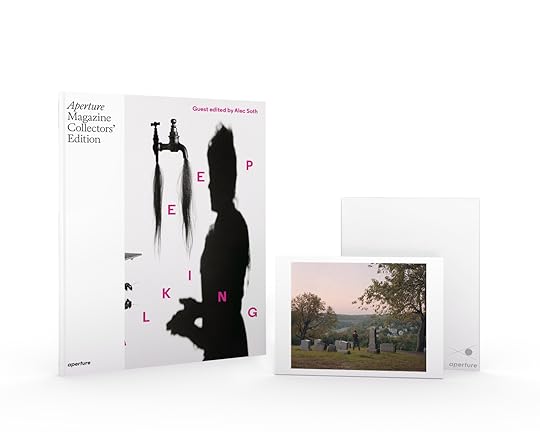
Aperture Magazine Collectors’ Edition: Alec Soth
Shop Now[image error]
Aperture Magazine Subscription
Shop Now[image error]Read more from Aperture, issue 247, “Sleepwalking.”
June 3, 2022
An Artist’s Video Choir Tells a Story about Black and Queer Visibility
Bad singer? Check. Queer female masc? Check. Game to explore both? Check.
On July 15, 2021, I was scrolling through Facebook when I saw a post by Toronto artist Michèle Pearson Clarke announcing a new project about learning to sing. She needed three game participants who fit the above criteria. I stopped in my tracks and immediately answered her invitation because, yes, that’s me.
I am indeed both a bad singer and on the spectrum of queer female masculinity, so I was fully confident in my fit for Michèle’s Quantum Choir. I was also thoroughly discomfited by what it would ask of me. I’m an objectively awful singer: memories of being instructed to lip-sync in my elementary-school choir still haunt me. And this is precisely why I responded to Michèle with lightning speed: I worried that if I had time to think about it, I’d back out. I had a strong desire to embrace what terrified me and reminded myself that I had nothing to lose but face. And in my forty-eight years I’ve learned that saving facing is overrated, anyway.
There were other reasons for my yes. I admire and respect Michèle’s work, so I welcomed the opportunity to create something with her. And as a writer and photographer who asks people to say yes to sharing parts of themselves with me, I want to offer my own yeses in turn. I also learned that our professional vocal coach would be Teiya Kasahara—not only a supremely talented soprano (and currently a Disrupter-in-Residence at the Canadian Opera Company) but also a former soccer teammate. In short, I knew that despite my trepidation (okay, terror), this would be a unique and compelling learning experience, no matter the outcome.
There was joy in being a complete amateur, in playing around in the sonic sandbox, in letting go, or attempting to let go, of my perfectionism, in having no control over the final product. I knew that, with Michèle and Teiya, I was putting myself—and my voice—in safe hands. My work was the process of learning to sing one song over the span of a few months. The process was the thing, not the product, not perfection.
I spent a few months learning John Grant’s “Queen of Denmark,” which is an incredibly challenging song to sing because it’s quiet, it’s loud, it’s low, and it’s long. I learned that I’m an alto (no matter how much I’d love to be a tenor). I learned new vocabulary as I worked with Teiya to train my voice as a muscle. I also learned new ways of thinking about my body. I can now utter such phrases as “I’m working on my diaphragmatic breathing” and “inviting resonance from my nasal cavity and occipital bones” and “projecting sound at a forward angle” and know what they mean (sort of).
For Quantum Choir, part of Michèle’s first major solo exhibition, Muscle Memory, currently at the Art Gallery of Hamilton in Ontario, success meant showing up, being curious about the work, and, in the end, performing for her camera. Getting through the song was the goal. There was a freedom in not needing to be good, in not needing to be attached to outcomes. At the same time, I wanted, desperately, to not entirely embarrass myself in the final piece. There wasn’t enough time to excel, but I wanted to sound less bad in the end. Between weekly lessons with Teiya and daily solo practices (including recording my solo renditions of the song so I could hear myself in playback), I did get better.
Now that the practicing is over, the recording is behind me, and the video installation is live, I look at the performance with some pride. There are moments when I don’t cringe at the sound of my own voice. Seeing Michèle’s final edit, her making the four of us a choir on massive screens, was unlike anything I’ve experienced. My partner watched it multiple times, from different angles, and said (through her femme tears) that it was “hugely moving to be with butch fierceness and vulnerability.” Other members of our queer community thanked us for offering a reflection of themselves on screen. It has been a telling reminder that butch representation matters, and that despite our legibility, there is a continued erasure of us in the culture at large.
I began this project confident in who I am as a masculine-of-center woman with deep awareness of myself as a terrible singer. But one of the biggest takeaways for me is that I sound better if I act like I’m good at it: if I really give it in performance and pretend I’m a superstar. Not holding back meant simultaneously carrying confidence and vulnerability, singing badly with shoulders back, head high, lungs full, voice loud.
 Michèle Pearson Clarke, Still from Quantum Choir, 2022
Michèle Pearson Clarke, Still from Quantum Choir, 2022Kerry Manders: Where did the idea for Quantum Choir come from?
Michèle Pearson Clarke: Quantum Choir arose from me thinking about my process and coming to understand that I’m not a good judge of what other people are willing to do in and for my artwork. I’ve made this repeated artistic gesture of asking community members to be vulnerable before the camera, but then a few projects fell apart or needed to be changed quite significantly because nobody was willing to do what I was asking.
Quantum Choir emerged from this question: What is my line in the sand? What would push my limits? How do I lean into discomfort? What would it look like to make a project addressing my greatest source of vulnerability? It was clear immediately that this meant singing because I’ve had this lifelong shame about my singing voice.
Manders: How do you feel about your singing voice?
Clarke: Until Quantum Choir, I’d never sung publicly in my entire life. I’ve always avoided it in every single situation that required it—whether it was “Happy Birthday” or the national anthem. I would mouth the words to appear as though I’m participating. A few years ago, I thought about taking singing lessons to overcome my fear, but even the idea of singing in front of a teacher felt daunting and embarrassing. And I started thinking about this in relation to queer female-bodied masculinity. Is the vulnerability that I was feeling about singing just personal, or was it rooted in something larger? I wanted to combine the personal and the cultural context—to invite us to think about these issues more broadly.
Because part of the shame I feel about singing is rooted in a gendered childhood memory: I went to an all-girls school where choir was very popular—a very “cool girl” thing to do. But I couldn’t sing, so I couldn’t join. There is a very real feeling of failure tied to this girlhood memory that steered Quantum Choir.
Manders: That’s a visceral memory of being a girl who failed and, in a way, a failed girl.
Clarke: That’s the link for me to notions of queer failure and its relationship to female masculinity. But that memory is also linked to being shaped by a Trinidadian culture of performance and wit, of natural entertainers, of enthusiastic dancers, of loud voices, of engaging storytellers. So, it’s interesting for me to feel like a failure at this particular performance thing—singing. So many of us understand what it feels like to be a failure at singing. I hope people can tap into that when they watch us try to do it. I hope I’m touching on both individual and larger cultural narratives around what it means not to be “good.”
Manders: The tensions and intersections between individual and larger cultural narratives are a big part of your work, which brings me to The Animal Seems to Be Moving (2018–23)—a striking title for a series of still images.
Clarke: Like several of my titles, it was inspired by something I was reading. I was thinking about the ways in which the Black male body is often seen as beastly, animal-like; and I was thinking of how my self-portraits are documenting a transition period in my life. There’s a sense of motion and movement over time in them.
This project is about aging, the shift in my appearance, and the shift in responses to my appearance. I’ve always been read as younger than I am, and now, whatever threat I present to some people seems to be increasing as I physically get older. I was also thinking about my own relationship to masculinity and the complex pleasure that has given me throughout my life. There’s something kind of primal in my sense of my own masculinity, particularly in the yearning. There’s a desire for certain experiences that I will never be able to have. As a female-bodied person, there’s a gap that can’t be bridged.
Manders: I’m thinking about your use of the words primal and animal and associating it with something forceful and fundamental. Often the human relationship to animals is one of paternalism, hierarchy, ownership.
Clarke: I’m always contending with those power relations given the history of visual representations of Blackness—the ways that photography has been complicit in constructing certain ideas of Blackness, and teaching us to see Blackness in certain ways, including seeing it as something to be conquered and owned. That history continues to provide violent and damaging assumptions about cis Black men, and those beliefs affect me as well, because of my masculinity.
No matter what your race is, we’ve all been fed certain visual representations of Black lives, and these continue to shape and influence the ways we make images.
Black masculinity is often deemed to be dangerous, brute, animalistic. And connected to these ideas is the assumption that we feel less pain. These dehumanizing stereotypes had specific and purposeful effects: to justify enslavement, to justify segregation, to justify torture, and they continue to be deployed to justify the disproportionate amount of force we face when we’re arrested.
Manders: That these ideas and stereotypes are still very current is a crucial aspect of your work.
Clarke: As a Black artist, I have to grapple with that representational history. I think of it as a thick filter that anyone looking at a contemporary image is necessarily looking through. That filter comprises nearly two centuries of negative images that we’ve all been exposed to. Those perceptions and representations get layered on top of contemporary images, and I question whether it’s possible to see a contemporary image of Blackness without these older ideas present. No matter what your race is, we’ve all been fed certain visual representations of Black lives, and these continue to shape and influence the ways we make images.
 Michèle Pearson Clarke, Glitter Stache, 2021
Michèle Pearson Clarke, Glitter Stache, 2021Manders: How do you contend with that racist history?
Clarke: To date, for me, the most effective strategy has been performance. I read Nicole R. Fleetwood’s Troubling Vision (2011) during my MFA studies, and her analyses of the relationship between performance, visuality, and Blackness were very compelling.
Also indispensable was Tina Campt’s Listening to Images (2017), in which she invites us to tune into the frequencies that affect how we see Blackness when we look. So, what we feel shapes what we see. Taking my lead from these scholars, I try to harness the affective qualities of performance—to shape a particular relationship to the visual content of the photograph.
I’m not necessarily trying to speak back to or against the history—to resist it. I don’t even use resistance anymore in descriptions of my work because that really frames what I’m doing in a binary relationship to an external anti-Black gaze. Instead, performance becomes a pathway to foreground my own pleasure and agency, to address my communities and to both reveal and withhold my experiences of being queer, being Black, being masculine. I’m good with being all those things. Any issues I have emerge from other peoples’ ideas about them.
With these self-portraits, I am really embracing humor and play as I perform for the camera. They are my attempt to speak to the absurdity of the way my Black masculinity is framed through those racist historical visual lenses.
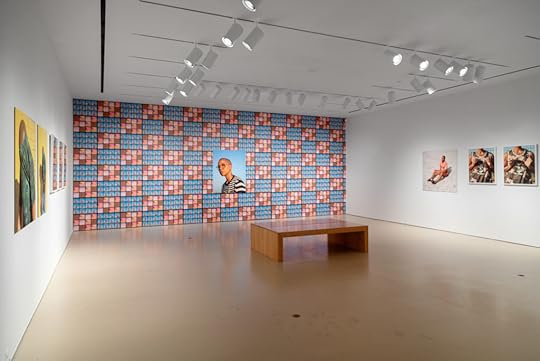 Installation view of Michèle Pearson Clarke: Muscle Memory, Art Gallery of Hamilton, Ontario, 2022. Photograph by Yuula Benivolski
Installation view of Michèle Pearson Clarke: Muscle Memory, Art Gallery of Hamilton, Ontario, 2022. Photograph by Yuula BenivolskiManders: At the Art Gallery of Hamilton, the self-portraits are in a room adjacent to our Quantum Choir video installation. Are there connections between these two parts of the show you call Muscle Memory? Did Quantum Choir grow out of the self-portrait work, as an extension of it?
Clarke: They’re connected to my rebuilding of self as I grieved my mother’s death over the past decade. As anyone who has been through the grief process knows, you can become unrecognizable to yourself along the way. Thankfully, I’ve recovered most of myself, I think, and part of that rebuilding has involved both my gender and my aging self.
This happened during a time of increasingly fraught cultural conversations about masculinities. About toxic masculinity. About trans masculinity and increasing visibility. About white masculine privilege. About Black masculinity and police violence. All these masculinities act upon my own masculinity and shape others’ ideas about me. Both The Animal Seems to Be Moving and Quantum Choir emerged from these broader reflections.
Manders: I’m curious about why you crafted a choir out of the idea of learning to sing.
Clarke: When I started to think about this project, I knew I wanted multiple people in it. All my work involves collectivity and kinship. I come from a community engagement background, and that always influences the way I work. And speaking against oppression, addressing difficult issues, doing hard things—all of these things are easier when you can do them with other people.
I’m also trying to say something about systemic issues rather than individual ones. Oppression is not a personal problem, it’s not unique to me. Taking an autoethnographic approach—making projects derived from my own experiences—but including other people who share those experiences is a strategic choice to avoid that reduction.
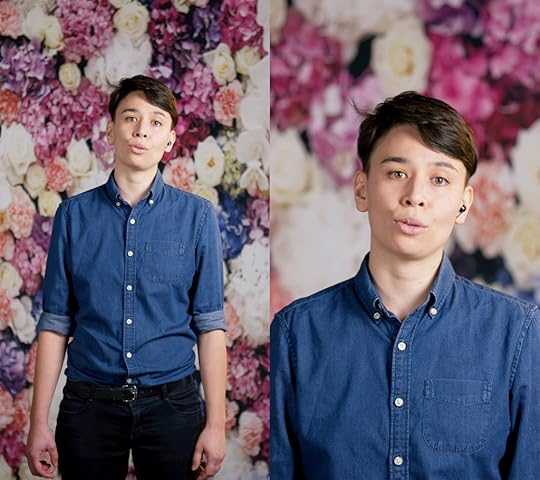 Michèle Pearson Clarke, Still from Quantum Choir, 2022
Michèle Pearson Clarke, Still from Quantum Choir, 2022Manders: Four of us comprise Quantum Choir, but we didn’t actually sing the song together. We’re a bit of a paradox: a choir made up of solo performances. You say that doing a hard thing with others is easier, but we did most of the actual work separately. Can you talk about the balance between the individual and the collective aspects of this work?
Clarke: Practicing and filming individually was always the plan, because I wanted each of you to have your own experience of doing this very hard thing—your own vocal lessons, your own performance in front of the camera. I didn’t want you to have to worry about what anyone else was doing or to have to try to perform in any particular way.
Through my edit and the design and layout of the video installation, I was then able to construct and communicate collectivity—that’s in the very structure of the work. We become a choir in the way we address the viewer. But it felt important to keep the vocal lessons mostly private so that you would have your own relationships with our vocal coach, and we could learn the song in our own time and as we wanted, needed, and were able to.
We were all dealing with our own shame around our “bad” singing voices—I thought about what I was asking of you and what I’d want as a participant, and it wasn’t to feel shame in front of others all the way through. That would be adding another layer of difficulty.
Manders: It was difficult! When I first saw the artist statement for your exhibition, I had a very visceral reaction to the title, Muscle Memory. It felt incongruous to my experience: I have absolutely no muscle memory when it comes to singing!
Clarke: But you built some over the course of two months of lessons, right? The title Muscle Memory really ties both parts of the show together. Both look at female masculinity. One is about my own Black aging body, and the other is about the four of us learning to sing as a way to reflect on the vulnerability of visibly queer female masculinity.
The vulnerability in both projects has to do with the external gaze—the way people see me, see us. For any one of us who deals with hypervisibility in our culture, muscle memory develops as a response. Every time I leave my house, I adjust automatically to make myself as least threatening as possible. I’m always aware of others’ eyes on me. This lifetime of hypervisibility means that we’re used to being looked at and to being judged for how we look. Like, we walk into the women’s washroom and automatically code-switch—adjust ourselves, our bodies, to that space and what’s expected there.
Manders: Ah, yes, butch bodies in bathrooms. I find myself pushing out my chest a bit, so others can see that I have breasts and I might avoid the dreaded bathroom battle. When we were all at the AGH for that donor reception, I went to the washroom down the hall from Quantum Choir and got the familiar, “You’re in the wrong washroom, sir.” As soon as I spoke, the woman apologized. My speaking voice is a tell.
Clarke: Your body knows to expect that surveillance and has engrained reactions to it. It’s that automatic and repeated response: muscle memory as coping mechanism. And it’s so often a spatial thing for us. A lot of what I experience as a queer masculine person is about spatial discrimination—I’m not “supposed” to be in a women’s washroom, or I’m not “supposed” to move in a certain kind of way in a certain kind of place.
 Michèle Pearson Clarke, Still from Quantum Choir, 2022
Michèle Pearson Clarke, Still from Quantum Choir, 2022Manders: Like how we walk. Apparently, I have a sort of swagger when I walk, and I take long strides. I’ve been told my whole life that I don’t walk in a “ladylike” or feminine manner. I’m not a “proper” woman.
Clarke: As I mentioned earlier, the exhibition overall addresses that notion of queer failure. If models of success in our society involve heterosexual, white, able bodies, then Muscle Memory addresses the queer, female, masculine body as a subsequent failure. Queer theorists have invited us to think about this failure not as a space of deficit or negativity, but as a generative space that produces other ways of knowing, thinking, and feeling.
I accept that invitation in reframing the “failure” of my singing as an opportunity to generate something meaningful for me, for the three of you, and then hopefully for our audiences. I wanted to explicitly address the homophobia and the shame that the four of us experience by opening up our failure as something playful and productive. Rather than be reduced by it, I wanted to expand—to just allow us a little bit more breathing room.
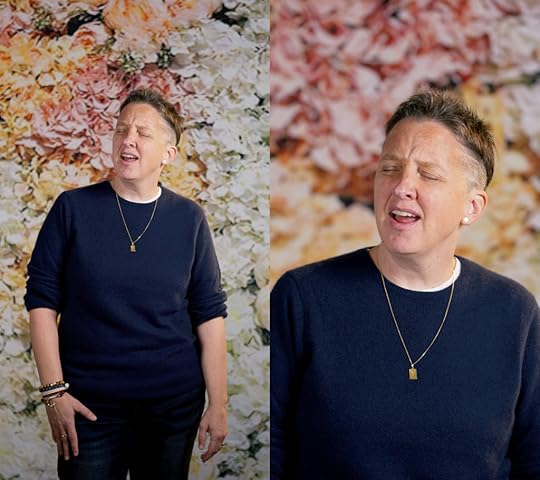 Michèle Pearson Clarke, Still from Quantum Choir, 2022
Michèle Pearson Clarke, Still from Quantum Choir, 2022Manders: Speaking of breathing room—that chorus!—why did you choose John Grant’s “Queen of Denmark” for us to perform?
Clarke: It’s the title track from one of my favorite albums. The lyrics resonate, and I enjoy their ambiguity too. The chorus is clearly an address, but to whom? There’s a slippage there that works as both an invitation and provocation. And there’s that drastic change in tempo where the song goes from the melancholic to the soaring. I wanted that drama for us! I also wanted to sing a song by a queer artist, and I’ve appreciated the way that Grant has spoken about gender and queerness in the past. Grant and I might come at the issues in different ways from different lived experiences, but we meet in the song.
Manders: “We meet in the song” is a wonderful and evocative way to describe the individual and collective experience of making Quantum Choir itself, and perhaps the experience of the audience who listens to us. We all meet in the song. That’s part of the experience for the spectators’ bodies, too, how you set up the exhibition space to orient those bodies in certain ways that are maybe uncomfortable and confusing. Many people don’t know where to stand or how to look or listen when they encounter the installation.
Clarke: I’ve been really struggling with the power dynamics of the exhibition space itself. What does it mean to position queer or Black vulnerability in an art gallery for public consumption? There’s a long history of our suffering bodies being used for pure spectacle and entertainment. While I can’t free myself from that history, I don’t want simply to replicate it.
In galleries, a lot of video installations are projected on a wall, and a spectator sits on a bench in front of it and passively consumes the content. For Quantum Choir, I wanted to construct a more active relationship with the spectator—I wanted to ask the spectator to think consciously about their own body in a spatial way while looking at us. I wanted active versus passive viewership. I also wanted to find ways to introduce more opacity into my work. In this case, all four of us are always on screen, but because of the set up, you can never look at all four of us at the same time.
It’s like: I’m going to share my vulnerability with you. I’m going to give you all of this but I’m also going to hold something back. There are moments, too, when auditorily, each of us is holding something back because only three voices or two voices or one voice can be heard. You can never see or hear all of us all at once.
 Installation view of Michèle Pearson Clarke: Muscle Memory, Art Gallery of Hamilton, Ontario, 2022. Photograph by Yuula Benivolski
Installation view of Michèle Pearson Clarke: Muscle Memory, Art Gallery of Hamilton, Ontario, 2022. Photograph by Yuula BenivolskiAll images courtesy the artist
Manders: It’s a different performance depending on where your body is positioned in the space. Move your body and you necessarily see and hear our bodies differently. And speaking of bodies in space, tell me about the soccer balls and practice pylons on the gallery floor.
Clarke: I wanted to have some kind of intervention in the gallery to support this experiment around asking the viewer to be active. I want the viewers to have to do a little navigational work, to actively orient their own bodies in the gallery space and in relation to us. Not a lot of work, but a little bit of effort in this exchange.
Conceptually, I chose the soccer balls and cones because, for all four of us, sports has been the only consistent place in our lives where our masculinity has been encouraged and supported. While the four of us are in the very center of this gallery doing this hard, vulnerable thing, we’re literally surrounded by these symbols of a safe space for our masculinities.
Manders: Have there been responses to the exhibition that have surprised you?
Clarke: Kids are loving it! I don’t think that I ever considered kids as spectators when I was making this work. They love the soccer balls but are a bit frustrated that they can’t kick them. But the balls are objects that kids run through and by. They are interacting with those aspects of the show in ways that adults don’t.
I think kids like the sonic experience of the song too. Formally, Quantum Choir builds on strategies of intentional repetition, and children respond to that. And I think they respond to the buildup to the song—us doing our different vocal warm-ups.
I also didn’t expect that so many people would cry while watching it. I thought that might happen for people who know us and love us, but it seems to offer a more general sense of release amidst the tension and stress of ongoing pandemic life. After all of this time of being isolated from one another, I can only hope that our collectivity provides some solace.
Michèle Pearson Clarke: Muscle Memory is on view at the Art Gallery of Hamilton, in Hamilton, Ontario, through September 5, 2022.
June 2, 2022
How to Produce a Photobook
What does it truly take to make a photobook? Making a photobook is like playing a puzzle or a game, one with plenty of room for creativity within certain rules or parameters. As Christina Labey, cofounder and creative director of publisher and bespoke production house Conveyor Studio, puts it: “One thing I love about the book format is that it inherently has limitations.” There are many possible permutations in book design, which is perhaps why Labey and other publishers and designers often get involved early on. This can mean coming on board when the project exists solely as a folder of images—or even before the photographer has started shooting.
Designer Hans Gremmen is the founder of Fw:Books, the respected Dutch publisher behind award-winning titles such as Andres Gonzalez’s American Origami (2019) and Lora Webb Nichols’s Encampment, Wyoming (2021), as well as designing a number of Aperture publications, including Rinko Kawauchi’s Illuminance (2011; reissued 2021), Ametsuchi (2013), and Halo (2017). Gremmen, who has worked during the concept stage and while the photographer was still making the series, explains how getting involved early can allow for a holistic approach, for thinking of the book and the project together. The approach also helps to prevent issues such as realizing too late that something is missing.
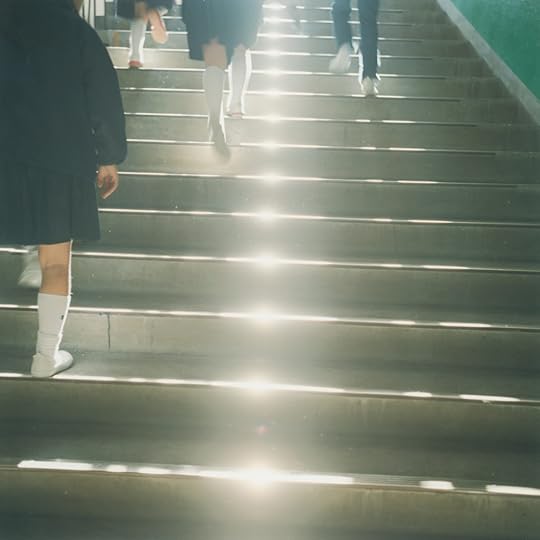 Rinko Kawauchi, Untitled, from Illuminance (Aperture, 2021)
Rinko Kawauchi, Untitled, from Illuminance (Aperture, 2021)Cécile Poimboeuf-Koizumi, director of French publishing house Chose Commune, always approaches the artists she wants to work with so she can broach the possibility of a book before they’ve even thought of it. And for Cemre Yeşil Gönenli, the artist, publisher, and brains behind Istanbul’s FiLBooks, the first step is to question whether a project should be a book at all. “I get involved when I really think that the book as a format adds to the narrative of the story,” she explains. “I feel I need to justify the reason behind why that specific work has to be in a book form.”
If a book makes sense, these makers typically get involved in editing and sequencing the images. This can be done digitally—with Poimboeuf-Koizumi using Adobe Bridge to edit images before sliding them onto InDesign—but will usually also involve physically printing the images and laying them out. Making a photobook will always involve making a dummy or prototype at some stage, though this may be without the images. As Poimboeuf-Koizumi points out: “The act of flipping through pages is definitely not the same as clicking on a PDF.”
 Working on the edit and layout of Atomic Island by Ben Huff (FW: Books, 2021)
Working on the edit and layout of Atomic Island by Ben Huff (FW: Books, 2021)Courtesy Hans Gremmen
That physical aspect is important when thinking through the edit and sequence, because both can be affected by the choice of papers and binding. As Gremmen explains, books are typically made in sections of eight or sixteen pages, which means any special group of images will ideally be gathered in multiples of those numbers; once that set is assembled, it can’t be added just anywhere in the rest of the pages.
The paper—or papers—is a key factor in the book’s tactile impact, but it can also affect the images. Coated or glossy papers typically hold the inks better than uncoated pages, which means the photographs will look sharper, more detailed, and more contrasted. On the other hand, the glossy papers will also reflect light more, making the images harder to see. Uncoated papers feel softer between the fingers but may result in images that are slightly less crisp. If the book is being bound with a spiral ring, the paper will also need to have a minimum thickness to withstand being punctured.
The image and paper combination can also affect a photobook’s size, because one must strike a delicate balance between maintaining creative freedom and keeping within budget. Making the book at one size mean printing thirty-two pages per printing sheet, for example; making the book just one inch bigger might mean cutting that to sixteen pages per printing sheet, which instantly doubles the paper cost.
Factory Visit: Conveyor Studio from Conveyor Studio on Vimeo.
Going large will add weight and therefore transportation costs, which Labey points out can have a significant impact when shipping books long distance for book fairs or distribution. “There is an added pressure to sell heavy books at a fair, or correctly predict how many to bring, otherwise you have to ship them home, and you might end up losing money on that edition,” she says. “When you print in smaller editions the production price per book is notably higher—an important factor if you hope to profit, or honestly, just break even.”
Size and weight are also critical to the reading experience. A big book may work well for very detailed images, for example, which call to be printed at a substantial size; on the other hand, going large can create a monster volume that is unwieldy to hold or move. “In addition to practical considerations for the book maker or publisher, you need to consider how the reader gets physical with your work,” Gönenli says. “The size of the book is a very fundamental element which directly influences the intimacy between the book and the reader.”
“The basic things I always try to get down very quickly are the size of the book and the amount of pages,” Gremmen adds. “When you know about those two things, then the paper choice follows quite quickly afterwards. But also with those two things, you determine what kind of book you are making. You can calculate budget based on those two specifications, but you also decide on the kind of book.”
 Cover and interior spread of American Origami by Andres Gonzalez (FW: Books, 2019)
Cover and interior spread of American Origami by Andres Gonzalez (FW: Books, 2019)A text—or texts—may also be included, though the publishers included here are wary of thoughtless or overly didactic writing. If a text is going in, a typeface will also have to be chosen. Fonts can be used multiple times by a designer, who may already have some available at minimal cost, but if not, a new font can be bought in or, to go the whole hog, created bespoke for the project.
Printing essentially comes down to two choices: offset or digital. Put simply, offset is the traditional option that involves aluminum plates with a silicon base for each sheet; the inked image is transferred from a plate to a rubber blanket and then to the printing surface. Since each plate comes at a price, offset is typically used for print runs of a minimum of five hundred copies, allowing the initial outlay to be spread over more units. Though digital printing is often regarded as lower quality, it can work best for smaller prints runs, as the price per book remains the same.
The choice between offset or digital printing also depends on the capabilities of the printer, because digital offset can be used for bulk jobs to more average ends, or by skilled operators to a very high level. “We print on an HP Indigo, which is considered a digital-offset press,” says Labey. “It combines the electrophotographic process of a copy machine with the architecture and liquid ink of a traditional offset press. In short, the printing plate is wiped clean, and a new image is etched with each rotation. This removes the time and cost of creating physical plates and allows us to print very small quantities with high-quality results.”
 Printing the cover of Laissez-Faire by Cristiano Volk (FW: Books, 2022)
Printing the cover of Laissez-Faire by Cristiano Volk (FW: Books, 2022)Courtesy Hans Gremmen
Whether it’s traditional or digital offset, books are printed with the CMYK color model (cyan, magenta, yellow, and black), which means the images must be converted from the RGB color values (red, green, blue) generated by digital cameras and scans. The CMYK gamut contains a much smaller range of colors than the RGB color space, and although the conversion can theoretically be done by anyone with access to Photoshop, it’s a complex art best approached by an expert. In skilled hands, this, too, can become a creative process that might even involve alternative inks. Labey has worked with artists who replaced the magenta ink with fluorescent pink, for example, “which makes the images pop.”
Before pressing play on the print run, it’s advisable to print off some test images (which can cost over five hundred dollars per sheet of test paper, but that’s much cheaper than having to scrap an entire edition). Perhaps surprisingly, it’s unusual to test print all the images when using offset, because of the cost of the plates. Instead, a few key photographs are typically selected and printed on the paper to be used in the book, creating what’s known as a “wet proof.” An upside to printing digital offset is that it is possible to proof the full book on the same press and paper stock, trimmed to the same size as the final version.
There’s no one right way or recipe or formula. A book should always listen to its own rules.
Alternatively, a publisher can make digital proofs, which can represent every image in the book because they are cheaper per print. However, these tests are only simulations of the final result, and Gremmen takes a dim view of them. “To me those things are useless,” he says. “If you make a test print, it’s not about simulating, it’s seeing one on one how things will be.” Gremmen is often willing to oversee and sign off on the printing and production of books himself, but he says he prefers to work with companies he knows. Similarly, Gönenli works with only one printer: “Ofset Yapımevi, and they are perfectionists.”
The final step is putting everything together and binding the book—and, as with everything else in photobook-making, there are many options and lots of creative potential. Binding basically involves stacking the pages and combining them in a durable way, but books can be stapled, screwed together, or even folded together, if in handmade territory. In larger print runs, books are typically glued or sewn together.
Related Items
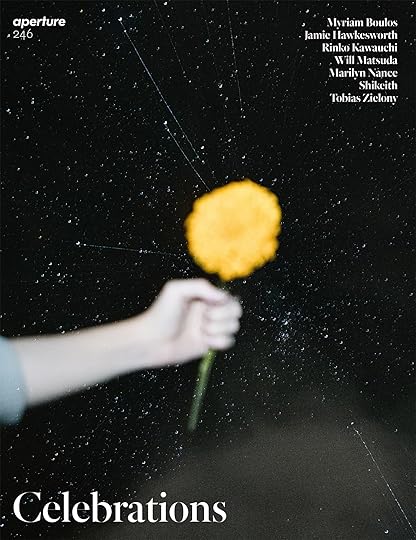
Aperture 246
Shop Now[image error]
Aperture Magazine Subscription
Shop Now[image error]Gluing, considered “perfect binding,” involves adding glue along the spine and simply affixing the cover. It can be efficient and very affordable, but it’s less dependable in the long term—a fact familiar to anyone who’s seen a book spine crack in the cold or melt in the heat. Sewing is more complicated because it involves folding and collating the separate sections, or signatures, of paper, then stitching them all together. There are many different approaches to this stitching, and it’s sometimes left exposed as a design feature.
The technical difference means that sewn books typically open and lie flat more easily than glued ones, though again, that’s not a hard-and-fast rule. The degree of flexibility depends on factors as (seemingly) obscure as the direction of the fibers in the end paper or the quality of the glue, making bookbinding another expert field. “It’s getting more tricky to find really good binders—they all go bankrupt, or retire, or whatever, and the knowledge is lost,” Gremmen says.
“But the most important thing for me is that the book opens very well,” he adds. “I see a lot of photobooks and, with almost half of them, I think, ‘This is horribly bound.’ It’s such a pity. You spend all this money on printing perfectly, and then you don’t care if this book opens well or not? I don’t understand it at all.”
 Alec Soth, Two Towels, 2004, from Niagara (Steidl, 2008)
Alec Soth, Two Towels, 2004, from Niagara (Steidl, 2008)Courtesy the artist/Magnum Photos
With all these variables at work, making a photobook can be tricky to get right—but it’s not impossible. When asked, all four designers and publishers easily named outstanding photobooks that they believe pull off everything mentioned above and more. For Gremmen, it’s Elasticity by Aglaia Konrad (NAi Publishers, 2002), which he describes as “perfect on a technical level” but also remarkable because of its interplay of image and design. “They push one another to another level,” he explains. “The photography makes the design better and the other way around.”
Gönenli reflects on Niagara by Alec Soth (Steidl, 2008) for many reasons, but partly for little details, such as the fact that “you have to tilt the book to be able to read the text on the back cover, as if it were a daguerreotype.” Poimboeuf-Koizumi says she was immediately struck by Rinko Kawauchi’s Utatane (Little More, 2001), explaining: “It’s literally when I understood the power of sequencing.”
For Labey, Misplaced Fortunes by Ross Mantle (Sleeper Studio, 2021) is a special book. Mantle cofounded Sleeper Studio with fellow photographers Ben Alper and Peter Hoffman, and his book is a good example of why this model can be beneficial, according to Labey. “It’s clear he was able to choreograph and control all of the elements from concept to design to production,” she says. “Thus, it really feels like a work in its own right.”
“There’s no one right way or recipe or formula,” Gremmen says. “A book should always listen to its own rules.”
May 27, 2022
Heinkuhn Oh’s Vivacious Portrait of Seoul in the 1990s
Behind the gleaming Namsan Tower that stands imposingly at the center of Seoul rests Itaewon, a compact quarter in which locals, artists, U.S. soldiers, drag performers, Muslims, gay men, transgender people, sex workers, and expats from around the world have long coexisted. The district’s history is thorny: when the U.S. army established a base in the area in the years following the Korean War, it garnered a reputation as an untamed, foreign terrain where GIs and Americana ruled. Soon after, the neighborhood became a territory for outsiders of all kinds, offering refuge for those who did not belong anywhere else in the city. Seoul’s inadvertent dip into multiculturalism thus began under the mythical, Cold War–inspired pretext of U.S. armed forces safeguarding democracy in South Korea—a nation that remains largely ethnically and culturally homogeneous to this day.
That gritty, crude version of Itaewon is extinct now for the most part, as relentless gentrification replaced small businesses with shiny but sterile coffee shops and restaurants. A glimpse into its past is nonetheless possible in the images of Heinkuhn Oh, who ventured out into the streets of Itaewon in 1993, shortly after studying photography in the U.S. at the Brooks Institute and Ohio University. As with his preceding series Americans Them (1990–91), which captures the raw, unglamorous lives of lay protagonists across Louisiana, Ohio, and Kentucky, Itaewon Story is tinted with a documentary outlook, curiously tapping into the disparate lives of individuals unfamiliar to the photographer. But if the earlier project portrayed rural America from the perspective of an outlander from the Far East, Itaewon Story locates the feeling of estrangement within the bounds of Oh’s hometown. Its impetus perhaps originates with the mavericks who meandered the cramped streets between brothels and the nearby Seoul Central Mosque as well as Oh’s own experience encountering his offbeat childhood neighborhood as a returnee from the United States.
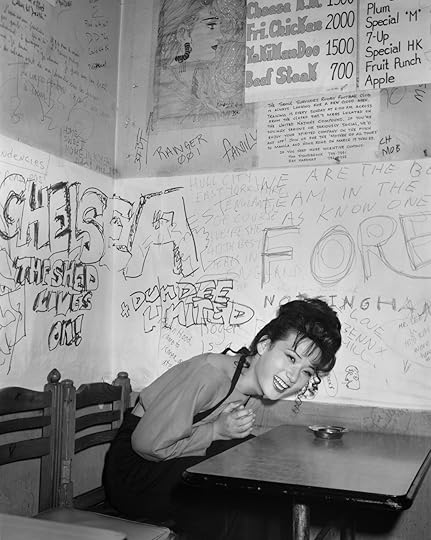 Heinkuhn Oh, Jiyoung in the Itaewon Barbecue Ramen House, February 1993
Heinkuhn Oh, Jiyoung in the Itaewon Barbecue Ramen House, February 1993Yet there is little distance between Oh and his protagonists in Itaewon Story. Theatrical as they might be, the characters of the series are photographed, in black and white, at moments of candor with minimal pretension, producing an unapologetic take on the traits of the locale. One image, Jiyoung in the Itaewon Barbecue Ramen House, features a young trans woman immaculately made-up, wearing a dark dress and a light-colored off-the-shoulder crop top, chuckling in the corner of a run-down restaurant whose walls are filled with graffiti. In another, Twist Kim, a forgotten movie star who made a living performing late-night shows in local bars and clubs, stands cheekily on the street with enough flair to land him on the cover of a fashion magazine. Astutely but affectionately, Oh’s camera seizes these releases of fleeting freedom, only made possible in the corners of seedy Itaewon.
Oh’s series thus resonates with other artistic endeavors to represent the marginalized and the vulnerable, including contemporaneous projects from the United States, such as Hustlers (1990–92) by Philip-Lorca diCorcia, that were shaped in the wake of the culture wars in the late 1980s and the early 1990s. Nonetheless, unlike counterparts across the Pacific, with Itaewon Story, Oh resists the temptation to politicize the identities of the individuals depicted—almost naively so, perhaps because there was no public sphere to accommodate discourses on identity at the time in South Korea. The series instead serves as a tender reminder of these Itaewon denizens’ existence, capturing a certain childlike sensibility of the young artist. Oh’s images demand that we remain curious about those strangers, foreigners, and outsiders around us, that we let them freely roam, showing us who they are.
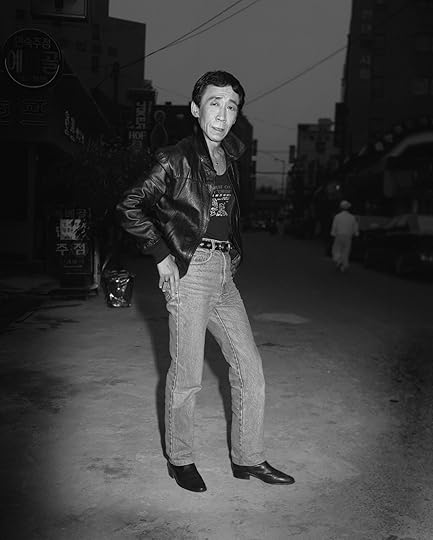 Heinkuhn Oh, Twist Kim, Actor and Singer, March 1993
Heinkuhn Oh, Twist Kim, Actor and Singer, March 1993 Heinkuhn Oh, Background Actress, June 1993
Heinkuhn Oh, Background Actress, June 1993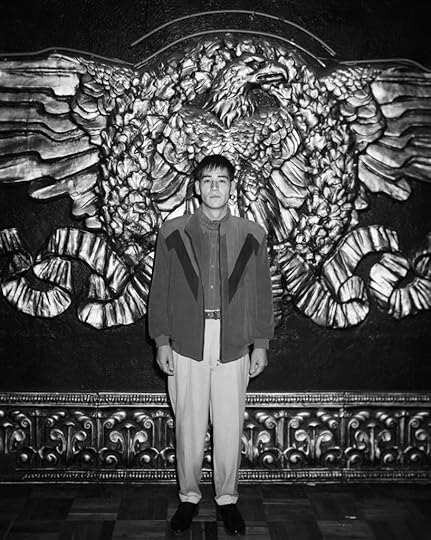 Heinkuhn Oh, Youngbok Han, GI Club Waiter, on the Dance Floor of King Club in Itaewon, February 1993
Heinkuhn Oh, Youngbok Han, GI Club Waiter, on the Dance Floor of King Club in Itaewon, February 1993 Heinkuhn Oh, Bulyi Kim, Actor, in a Backyard behind Tae-pyoung Theater, March 1993
Heinkuhn Oh, Bulyi Kim, Actor, in a Backyard behind Tae-pyoung Theater, March 1993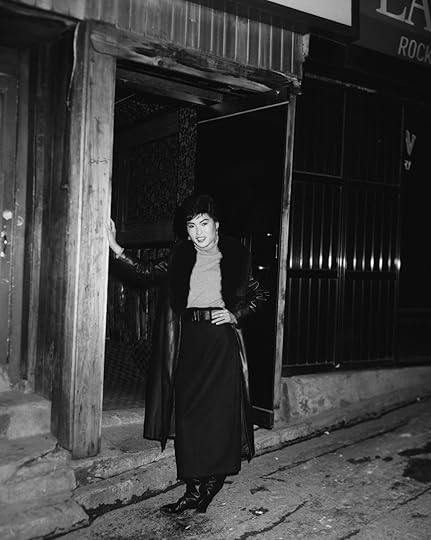 Heinkuhn Oh, Some Lady on the Hill of Lucky Club, January 1993
Heinkuhn Oh, Some Lady on the Hill of Lucky Club, January 1993All photographs from the series Itaewon Story and courtesy the artist
Related Items

Aperture 246
Shop Now[image error]
Aperture Magazine Subscription
Shop Now[image error]This article originally appeared in Aperture, issue 246, “Celebrations,” under the title “Itaewon Story.”
May 26, 2022
What Is a Feminist Picture?
In her book Girlhood (2021), Melissa Febos describes what it felt like as a child to be a body, before she learned to see herself as a body from without: “I would read or think or feel myself into a brimming state—not joy or sorrow, but some apex of their intersection . . . body vibrating, heart thudding, mind foaming.” This overpowering sense of sublimity—absent from the “composure and linearity” of “school bus routes and homework and gender and bedtimes and taxes”—feels connected to her young body. The feeling is a comfort in the face of such dissonance between her inner world and the imposing outer world.
It is a familiar story well told: this inner-outer dissonance, both universal and particular to the challenges a girl faces, to stay close to herself through adolescence and into adulthood in a world determined to will us from subject to object. We might resist by refusing to be seen, by looking back—or, as Febos does, by returning our gaze to our selves.
 Justine Kurland, Bathers, 1998
Justine Kurland, Bathers, 1998© the artist
Gazing as both refusal and becoming informs Our Selves: Photographs by Women Artists from Helen Kornblum, an exhibition on view at the Museum of Modern Art, New York. Kornblum, a psychotherapist, began collecting the work of women photographers at a time when photography was first being institutionally recognized as a fine art and “maleness was the norm,” as she writes in her catalogue essay. In 2021, she gifted the archive to MoMA in honor of the museum’s senior curator of photography Roxana Marcoci. Ninety of these collected works and a handful of photobooks fill a small room on the fifth floor of the museum, one effort of many made by art institutions over the last half-century to correct the art historical canon. The works were given in friendship, a fact that is unusually highlighted in both the provenance labels and the catalogue. The curator Kathy Halbreich, who introduced Kornblum to Marcoci, writes: “No one talks much about the meaning and impact of friendship on institutions. . . . It’s as if we are afraid of being accused of a lack of critical disinterest or distance if something as subjective and sentimental as affective attachment is broached.”
The show begins with Justine Kurland’s Bathers (1998), an image in which teen girls embody the titular art historical trope, swimming and lounging on rocks in a dappled pond. Febos’s sensory-dizzy narrator might be among them, their freedom exultant, collective yet private—and still, we might sense, threatened. The photo is mounted on a floor-to-ceiling clouded, wavering mirror, beside introductory wall text that asks, “How have women artists used photography as a tool of resistance? As a way of unsettling established narratives? As a means of unfixing the canon?”
 Susan Meiselas, A Funeral Procession in Jinotepe for Assassinated Student Leaders. Demonstrators Carry a Photograph of Arlen Siu, an FSLN Guerilla Fighter Killed in the Mountains Three Years Earlier, 1978
Susan Meiselas, A Funeral Procession in Jinotepe for Assassinated Student Leaders. Demonstrators Carry a Photograph of Arlen Siu, an FSLN Guerilla Fighter Killed in the Mountains Three Years Earlier, 1978© the artist
“The male gaze” has become so commonly referenced as to approach cliché—the sign of a powerful idea. Laura Mulvey’s term—which came out of 1970s feminist film theory—has led to further consideration of what a “female gaze” might entail. One intervention, posed by bell hooks, considers the “oppositional gaze” of Black female spectatorial interrogation; others question the heterosexual female gaze. Some of the work included in Our Selves arguably engages with the notion of a female gaze, but the show does not offer a chronological history or comprehensive account of feminist photography. The wall text explains that instead, “specific constellations of works and ideas” present “an invitation to look at pictures through a contemporary feminist lens.”
“What is a feminist picture?” The question, offered as the title of an online panel held in conjunction with the exhibition, knowingly invites infinitude. Many of the event’s fourteen speakers—including artists in the show such as Susan Meiselas and Cara Romero—wisely did not attempt an explicit answer, in part because feminism itself might be defined as variously as one might picture it.
Documentary photography throughout the show—by Susan Meiselas, Mary Ellen Mark, and others—emphasizes subjectivity, collaboration, and power rather than claiming objectivity or authority.
In her book Living a Feminist Life (2017), Sara Ahmed describes feminism as a collective movement, adding, “A collective is what does not stand still but creates and is created by movement.” Multiplicitous and relational, equally informed by intersectionality and phenomenology, Ahmed’s feminism is about how we move through the world together as bodies. Feminism is often an “experience that begins with sensation.” What is sensed might not immediately be named. But by bringing into the foreground what is so often in the background—things generally assumed unremarkable and therefore unremarked upon, like gender or taxes—a shift in perception can sustain the movement of infinite interpretation. In Our Selves, the camera frames these moments of the invisible made visible to picture feminism—static as an image, ever in flux as a project.
The “constellations” of Our Selves vary between thematic and more associative or conversational clusters. Some images are abstract or conceptual; others are of the natural world. One grouping features mostly early twentieth-century European photographers, including Dora Maar, Grete Stern, Ilse Bing, and Kati Horna. (Many were also present in the exhibition The New Woman Behind the Camera (2021–22), organized by the National Gallery of Art, Washington, DC.) Here their photos explore the literal and figurative mask, in some cases to anti-capitalist or anti-fascist ends, with mirrors and mannequins, dolls and double exposures, obscured faces and the faceless.
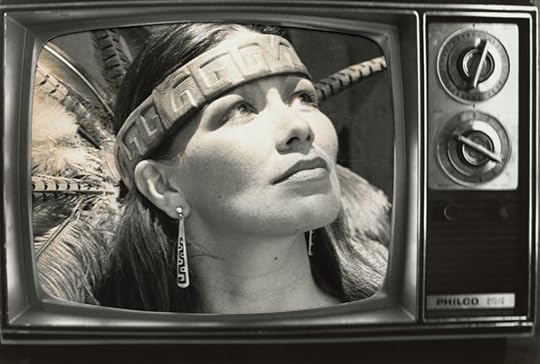 Hulleah J. Tsinhnahjinnie, Vanna Brown, Azteca Style, 1990
Hulleah J. Tsinhnahjinnie, Vanna Brown, Azteca Style, 1990© the artist
Many women photographing in this era straddled commercial and experimental worlds, smudging the boundaries or exploring opportunities for critique from within. Germaine Krull’s The Hands of the Actress Jenny Burnay (about 1930) might have been an advertisement for the delicate ring Burnay wears. Her hands are otherwise unadorned: bare-nailed and crossed in a way that obscures a finger on each, giving the impression of abstraction and a more intimate subject. Across the room, Lorna Simpson’s Details (1996) consists of twenty-one images of close-cropped hands from found studio portraits of Black Americans, each paired with words or phrases. Half learned and carried a gun underline the making of racist stereotypes, while separated and stopped speaking to each other seem to comment on the relationality of all knowledge, including that of ourselves.
Documentary photography throughout the show—by Meiselas, Mary Ellen Mark, and others—emphasizes subjectivity, collaboration, and power rather than claiming objectivity or authority. The images grouped in the catalogue’s chapter “Performance as Ethnography” subvert colonial-patriarchal control even more explicitly. Hulleah J. Tsinhnahjinnie (whose beautiful essay “When Is a Photograph Worth a Thousand Words?” argues for an Indigenous “photographic sovereignty”), created a photocollage as part of her Native Programming series. Titled Vanna Brown, Azteca Style (1990), the image nods to the Wheel of Fortune personality and the dearth of Native representation in media.
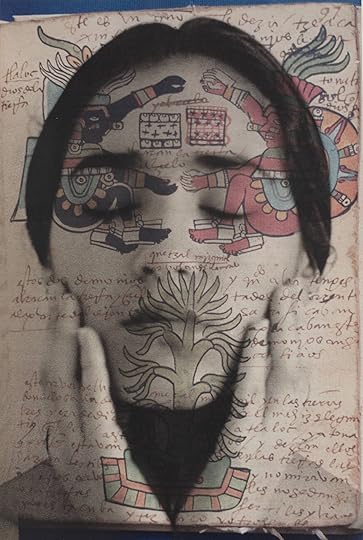 Tatiana Parcero, Interior Cartography #35, 1996
Tatiana Parcero, Interior Cartography #35, 1996© the artist
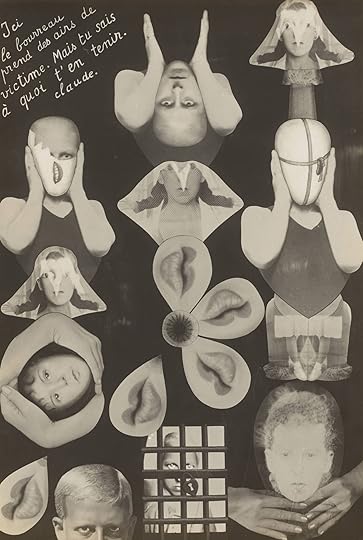 Claude Cahun (Lucy Schwob), M.R.M (Sex), ca. 1929–30
Claude Cahun (Lucy Schwob), M.R.M (Sex), ca. 1929–30 Structural inequality—sexual violence, policed bodily autonomy, pay disparity—may seem difficult to picture. Our Selves includes a variety of approaches. In Tatiana Parcero’s captivating Interior Cartography #35 (1996), the artist’s face is overlaid with the sixteenth-century Tudela Codex that details Mexico’s precolonial Aztec culture. The image shows her with eyes closed, fingers resting on cheeks, an illustration of a cacao tree meeting her closed lips. Nearby, Ruth Orkin’s American Girl in Italy (1951) is a straightforward and strikingly composed portrait of street harassment.
But moving through Our Selves, one might begin to see the structural—the background, coming into foregrounded focus—everywhere. An image from Carrie Mae Weems’s Kitchen Table Series (1990) shows the artist’s alter ego sitting with a daughter figure at the table, both applying lipstick before their own vanity. It is a moment of private ritual and maternal care, the performance of gender, an assertion of Black female beauty in relation to the gaze, and more. The series came out of Weems’s search for her own voice. In the audio guide she reflects on using her own domestic space: “What I’m suggesting really is that the battle around the family, the battle around monogamy, the battle around polygamy, the social dynamics that happen between men and women—that war gets carried on in that space.”
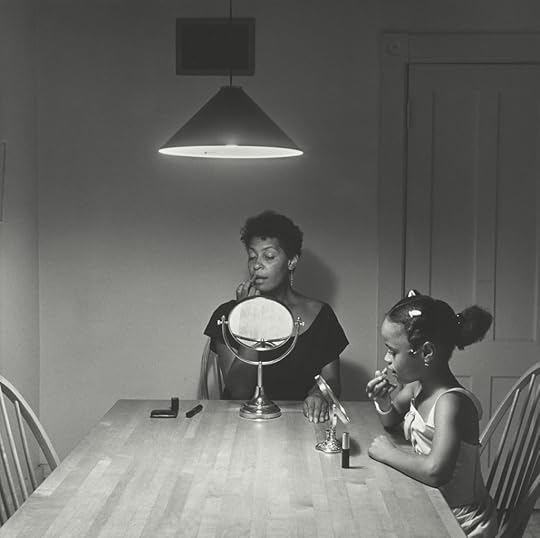 Carrie Mae Weems, Untitled (Woman and daughter with makeup), 1990
Carrie Mae Weems, Untitled (Woman and daughter with makeup), 1990© the artist
In her work, Ahmed often invokes phenomenologist Edmund Husserl’s “writing table” to queer it. She considers the kitchen or dining table, recalling A Room of One’s Own and Kitchen Table press to reflect on how long women have understood, by necessity, how tables are multiuse. Women have also understood the work that goes on behind them, out of view. Of the Kitchen Table Series, curator Adrienne Edwards has written: “There are moments when Weems clearly resists the ordering device that is the table—lying across it, leaning against a wall—and through serial images and a polyphonic voice we come to see how the figure comes to know and feel herself, affirming or countering our impressions of her.”
We are often made responsible for coming to our seat at the table. But we might demand that the table change if we are to sit, or we might change the table by sitting. Perhaps we ourselves are the site—or sight—of change. Catherine Opie’s Angela Scheirl (1993), of Scheirl against a rich red background, in a dapper suit, bright socks, and long shoes that command our attention, is a “portrait of becoming,” writes Dana Ostrander, a curatorial assistant at MoMA, in the catalogue.
 Installation view of Our Selves: Photographs by Women Artists from Helen Kornblum at The Museum of Modern Art, New York, 2022
Installation view of Our Selves: Photographs by Women Artists from Helen Kornblum at The Museum of Modern Art, New York, 2022Photograph by Robert Gerhardt
Queerness, in all the fullness of its meaning and possibility, also grants an understanding of the self with the permission to change—to become. Opie’s portrait of the Austrian artist and filmmaker, who would later go by Hans and now Ashley Hans, is a testament to the temporality and fluidity of self. Claude Cahun, whose work was largely overlooked until the 1990s, made complex Surrealist collages in collaboration with their lover and stepsister Marcel Moore. Cahun famously wrote in their 1930 “anti-memoir” Disavowels: “Masculine? Feminine? It depends on the situation. Neuter is the only gender that always suits me.” Their acute work playfully and presciently explores the multiplicity of the self, anticipating later feminist theory including, Marcoci writes in the catalogue, Judith Butler’s Gender Trouble (1990).
The sheer physicality of two pieces on the back wall is memorable. In Jeanne Dunning’s Leaking (1994), what seems to be tomato flesh appears—joyously, erotically—in the place of a woman’s tongue. The portrait is framed beside that same wet red in close-up, both images ovular, like giant locket portraits. Amanda Ross-Ho’s Invisible Ink (2010) is a ghostly imprint of the artist’s body, first made accidentally and then embellished, including with cut-out eyes that hauntingly penetrate.
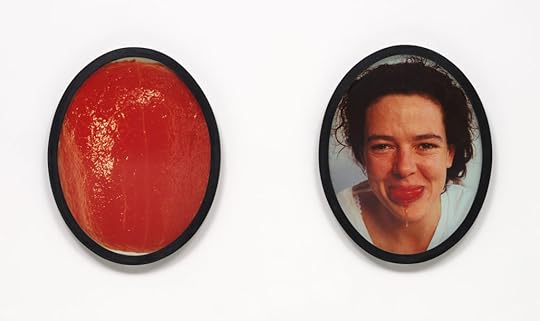 Jeanne Dunning, Leaking, 1994
Jeanne Dunning, Leaking, 1994© the artist
All works courtesy The Museum of Modern Art, New York. Gift of Helen Kornblum in honor of Roxana Marcoci
As the narrator’s body in Febos’s Girlhood begins to change, bumping up against the world’s expectations and desires of her (“My hips went purple from crashing them into table corners,” those unyielding ordering devices), she begins to experience shame more than that exhilarating embodiment of the sublime. She learns to fit herself, over time and to painful consequence, around such obstacles and demands. She learns to see from another’s eyes rather than her own. Febos finds her way back to herself, just as in Our Selves, women and gender-nonconforming photographers make their way through seeing, unseeing, and seeing anew. One woman’s life’s work—a collection of the labor of many, given to another in friendship—is a gift of sight seeking self and of self seeking sight.
Our Selves: Photographs by Women Artists from Helen Kornblum is on view at the Museum of Modern Art, New York, through October 2, 2022.
At the Venice Biennale, a Surreal and Intimate Showing for Photography
The 2022 Venice Biennale opens, in the Giardini, with an image of a green elephant: life-size, atop a white pedestal, radiating in the magnificence of its unnatural being. A surreal apparition, it recalls certain scenes shot by Paolo Sorrentino, in which a silent gorilla may pervade, with enigmatic mystery, the carefree tranquility of the Vatican gardens. Time stands still and the viewer cannot help but wonder: Why? An answer does not necessarily exist. The green elephant is a 1987 work by Katharina Fritsch, winner of this year’s Golden Lion for Lifetime Achievement award, along with Cecilia Vicuña. Standing at the beginning of the international exhibition, titled The Milk of Dreams and curated by Cecilia Alemani, director of High Line Art in New York, the sculpture is a sort of declaration of intent: the dream will be the main dimension of the art presented in this Biennale.
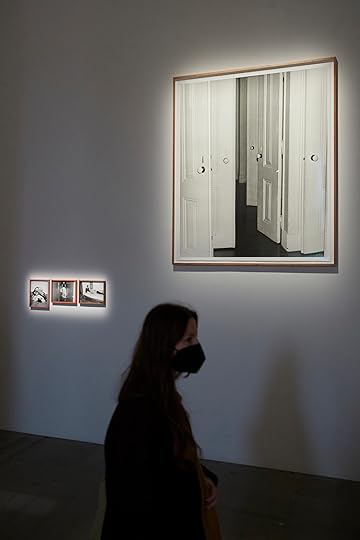 Installation view of The Milk of Dreams. Photograph by Gus Powell
Installation view of The Milk of Dreams. Photograph by Gus Powell  Central Pavilion of The Milk of Dreams, with sculpture by Katharina Fritsch. Photograph by Gus Powell
Central Pavilion of The Milk of Dreams, with sculpture by Katharina Fritsch. Photograph by Gus Powell Another animal-symbol present in the Biennale is the giraffe. In fact, there are eight white giraffes that drag a large anatomical model of the male reproductive system on wheels, to which are affixed tags bearing the names of illnesses that can afflict individual body parts. This work by German artist Raphaela Vogel, titled Ability and Necessity (2022), resembles an ancient Roman triumphal procession and positions the male organ as the definitive war trophy for the patriarchy. The Milk of Dreams is a feminist exhibition not only in terms of numbers (it is very difficult to recall a male artist among the 213 participants) but also, and readily, in its contents. The feminist and surrealist imprint will be why this Biennale will make history, no matter what you think of it.
If instead observed from the perspective of photography, which occupies a marginal presence at the Venice Biennale, Alemani’s exhibition does not seem capable of being a watershed moment. We see no true shake-up regarding the medium’s reflections or evolutions, only excellent choices that enrich the exhibition’s collective effect, which is another of its great virtues.
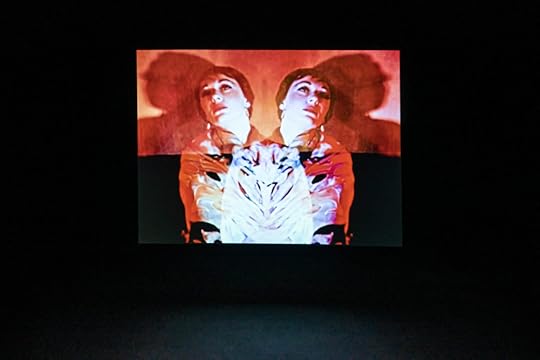 Nan Goldin, Sirens, 2019–2021. Photograph by Ela Bialkowska
Nan Goldin, Sirens, 2019–2021. Photograph by Ela BialkowskaCourtesy the artist and La Biennale di Venezia
Let us begin our examination with the well-deserved tribute to Nan Goldin, who is exhibiting for the first time in the Venice Biennale. The work she presents is not a series of photographs but a sixteen-minute video, Sirens (2019–20), that is dedicated to Donyale Luna, considered the first top Black model and who died from an overdose in 1979. The video, a collage of clips taken from works by Kenneth Anger, Henri-Georges Clouzot, Federico Fellini, and Lynne Ramsay, as well as screen tests by Andy Warhol, attempts to convey the glamourous atmosphere associated with drug use. Its title refers to mythological characters who are both seductive and lethal.
Louise Lawler is also having her Biennale debut, and Alemani has entrusted her with the mezzanine level of the central pavilion in the Giardini. Titled No Exit (2022), this wall installation surrounds an area where performers will circulate, through July 3, for a work by Alexandra Pirici. Lawler uses Hair (adjusted to fit) (2005/2019/2021), a vinyl-printed image that completely covers the walls of the room, as an abstract backdrop for ten large-scale photographs. These capture the works of Donald Judd as exhibited at the Museum of Modern Art in New York in 2020, but when the gallery’s lights were off. Lawler often questions art history by attempting to strip works by (male) grand masters of contemporary art of their sacred nature in their exhibition contexts, whether museums or private dwellings. Here, she hunts down works by Judd in the darkness, where the purity of their minimalism is more vulnerable and the luminosity of their conceptual backing is obscured. Another paradox is the relationship between the intrinsic cleanliness of the works portrayed and the chaos of their backdrop, which depicts a Maurizio Cattelan sculpture of a taxidermic cat standing on the back of a dog that faces an Andy Warhol self-portrait.
 Outside of the Central Pavilion at Giardini. Photograph by Gus Powell
Outside of the Central Pavilion at Giardini. Photograph by Gus PowellNot far off, again in the spaces of the Giardini, are works by Sheree Hovsepian, an Iranian-born American artist. Installed on a wall, her assemblages incorporate black-and-white analog prints and various materials such as wood, nylon, ceramics, twine, and nails. Small photographs show portions of the body of the artist or of her sister, her body double. At times, back, torso, and arms become figurative epicenters of sensual, abstract, geometric compositions, or what one might call new bodies born from the artist’s imagination, which has a surrealist and somewhat retro taste. The juxtaposition of these compositions, installed in severe walnut frames, recalls the material and forms of the central pavilion’s window by Carlo Scarpa that is formed by two intersecting circles. It probably constitutes the most successful burst of poetry in this Biennale.
 Alexandra Pirici, Encyclopedia of Relations, 2022. Photograph by Ela Bialkowska
Alexandra Pirici, Encyclopedia of Relations, 2022. Photograph by Ela Bialkowska Courtesy La Biennale di Venezia
Among the photographers invited to the Biennale, Aneta Grzeszykowska leaves the most unsettling impression. Her series Mama (2018) consists of twenty medium-sized photographs, in color and in black and white, that portray the artist’s daughter while she interacts with a silicone doll that has Grzeszykowska’s features. In certain close-up shots—of the young girl covering her mother’s eyes with her hands, sweetly resting her chin on her shoulder, or painting her face red—it is the unnatural gaze of the doll that throws the viewer off balance. The deception is revealed when the doll is shown without legs. The relationship between mother and daughter is reversed, and it is the latter who looks after the simulacrum of the former. And the poetics typical of Surrealism demonstrate, in cruel fashion, the crisis of the maternal institution.
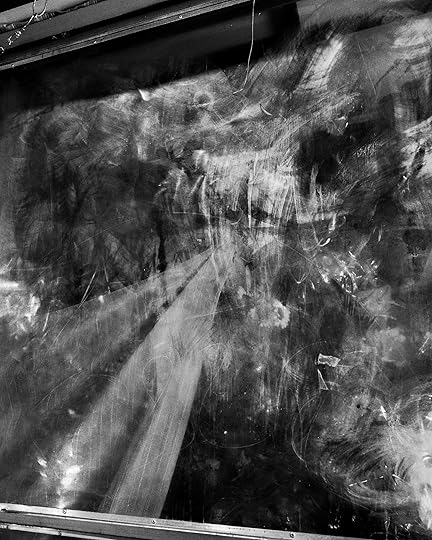 Elle Pérez, bodega (new york), 2022
Elle Pérez, bodega (new york), 2022Courtesy the artist and 47 Canal, New York
 Elle Pérez, Clinch II, 2022
Elle Pérez, Clinch II, 2022 The youngest photographers chosen by Alemani are the American artist Elle Pérez and the Polish artist Joanna Piotrowska (the only photographer shown in all the Corderie dell’Arsenale). What the two have in common, in addition to the use of black-and-white images, is a reflection on bodies that touch each other and interact. Pérez is an artist already featured in the Whitney Biennial. In Venice they present their “configurations,” the subject of which is the so-called “chinch,” the part of martial arts combat in which the contenders are in a standing contact position, using holds on the upper body. For Piotrowska, the contact of bodies is what takes place in domestic contexts, within the walls of the home where, far from the gaze of strangers, gestures of violence as much as those of care are consummated. Some of these pictures appeared in the book Stable Vices (2021). The image of physical interaction, for both photographers, becomes a metaphor for human relationships, grounds where virtue and subjugation, affection and hatred, can coexist, alternate, or oppose each other.
In all these photographs, we find echoes of the poetics of artists with work at the center of the Giardini pavilion, in one of five “time capsules,” as Alemani calls the mini thematic exhibitions that present artists who are no longer living, many of them lesser known. Titled The Witch’s Cradle, it includes works by female photographers such as Eileen Agar, Gertrud Arndt, Claude Cahun, Florence Henri, and Ida Kar.
The image of physical interaction, for both Pérez and Piotrowska, becomes a metaphor for human relationships, grounds where virtue and subjugation, affection and hatred, can coexist.
Among the eighty national pavilions, those representing Canada, Israel, New Zealand, and South Africa focus predominantly on photography. Stan Douglas’s exhibition 2011 ≠ 1848 is displayed at two venues, the Magazzini del Sale no. 5 and the Canada pavilion in the Giardini. In the former, Douglas presents a virtuoso two-channel video, in which viewers witness a long-distance dialogue between two rappers from London and one from Cairo; this is probably the part of the exhibition that will make the pavilion most memorable. In the Giardini, the Canadian artist shows four large-scale prints dedicated to various uprisings that occurred in 2011 in Tunisia, Vancouver, London, and New York. These are digital photomontages of scenes made in studios with actors, embedded in reconstructions of urban settings made with computer graphics. From a few yards away, the realistic effect, obtained through an impressive array of technologies, is convincing. But close examination reveals that something is not completely natural. Douglas calls his photographs “hybrid-documentaries.” The photos are fake, but the news is real. The result brings to mind the history-making function of overembellished paintings of coronations or battles in open fields, when photography did not yet exist.
 Installation view of Stan Douglas: 2011 ≠ 1848, 2017. Photograph by Gus Powell
Installation view of Stan Douglas: 2011 ≠ 1848, 2017. Photograph by Gus PowellIn the Israeli pavilion we enter Queendom by Ilit Azoulay, who intended to create a space governed by the logic of art based on female and cultural emancipation. The project takes as its point of departure an almost forgotten archive of photographs of Medieval metal vases from the Islamic world. Its collector, David Storm Rice, was an 18th-century Austrian Jewish British art historian who donated it to the L. A. Mayer Museum for Islamic Art in Jerusalem, thus preserving it in one of the most important museums in the world. Azoulay has scanned, cut out, and modified hundreds of these photographs, recomposing them digitally in seven large-scale prints. They are new artifacts of a rewritten history whose protagonists are no longer male warriors and kings but women. Azoulay’s idea, at heart, is to collapse into new images a visual history that has been forgotten and scattered all around the world, reflecting a utopian desire to recompose something that has been shattered. Perhaps her works are a type of kintsugi, the traditional Japanese art of repairing broken objects with gold.
 Installation view of Francis Alys: The Nature of the Game. Photograph by Gus Powell
Installation view of Francis Alys: The Nature of the Game. Photograph by Gus PowellThe New Zealand pavilion is devoted to Yuki Kihara, whose exhibition is titled Paradise Camp. The hub of this project, which also includes a video and installations of archives, is a series of twelve photographic images that reinterpret paintings of Tahiti by Paul Gauguin. These are actual works d’apres, for which the models belong to the fa’afafine community, Sāmoa’s third gender. Kihara, who is fa’afafine, was inspired by a 1992 article by Ngahuia Te Awekotuku, a Māori academic and lesbian activist, that notes how Gauguin endowed his models with androgynous and exotic features due to his fascination (as the painter described in his journal) for māhū, the Tahitian equivalent of the fa’afafine concept. Kihara gives us a version of Gauguin’s paradise in technicolor or, in keeping with the title of the pavilion, a camp version.
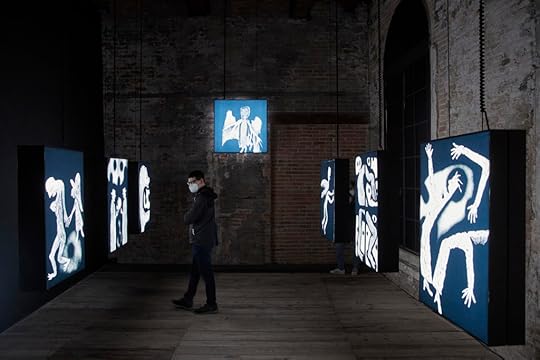 Installation view of Roger Ballen, The Theatre of Apparitions. Photograph by Gus Powell
Installation view of Roger Ballen, The Theatre of Apparitions. Photograph by Gus PowellViewing the 2022 Venice Biennale through photography, one cannot help but conclude with Roger Ballen’s series The Theatre of Apparitions (2016) in the South Africa pavilion at the Arsenale. Ten medium-sized lightboxes present an equal number of black-and-white photographs of drawings that the artist made with various techniques on the windows of a building in Johannesburg. Disturbing and childish apparitions, the subjects are typical of this South African photographer’s dark imagination. The gallery contains more than nightmares: premonitory dreams imbued with a sense of mystery. As I traversed the small room, Ballen’s words, published in Photo No-Nos, a book edited by Jason Fulford, came to mind: “It is clear to me that at this historical moment, a great percentage of contemporary artists and photographers are not interested in making the transition from the exploring media-driven slogans to coming to terms with the enigmatic, mysterious boundaries of our short lives on this planet.”
Translated from the Italian by Marguerite Shore.
The 59th Venice Biennale, including The Milk of Dreams, is on view through November 27, 2022.
May 20, 2022
The Photo Studio That Immortalized Argentina’s Popular Culture
Foto Estudio Luisita opened its doors in Buenos Aires in 1958, after Luisa Escarria moved to Argentina’s capital from Colombia with her mother and aunt, escaping La Violencia, a devastating armed conflict that scourged her home country for nearly two decades. Luisa’s sister, Chela Escarria, who also played an integral role in the studio, had arrived the year before. Introduced to photography at a very young age, Luisita and Chela were soon running a successful studio out of their small home on Avenida Corrientes. In the two decades that followed, being photographed their the studio became a rite of passage for the makers of the golden age of theatrical revue, including actors, dancers, comedians, singers, contortionists, sex symbols, and the occasional prize-winning canary or crowned adorned dog.
If the studio continued to thrive through the political and economic upheavals that marked Argentina during the 1970s and ’80s, it was the advent of the digital age that led to its closure in 2009. That same year, cinematographer Sol Miraglia, who is now the custodian of the studio’s archive, met the sisters and quickly became a presence in their lives. Over the next ten years, Miraglia sorted through roughly five decades of material, which might have met a very different fate if not for her fortuitous intervention. In 2018, working with her partner, Hugo Manso, Miraglia directed the documentary Foto Estudio Luisita, which offers a glimpse of her time with the sisters and her experience assessing the forty thousand images contained in the archive.
 Page from a theater program, ca. 1970
Page from a theater program, ca. 1970 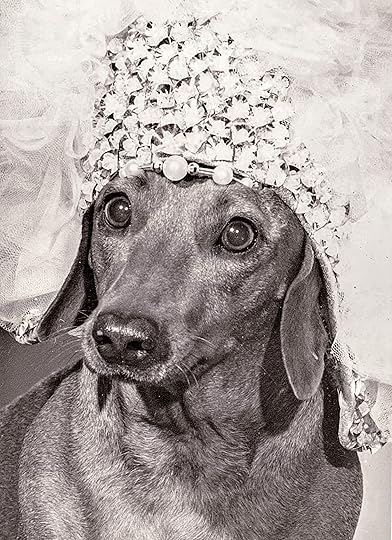 Diana, 1968
Diana, 1968 Although the Escarria sisters produced some of the most iconic images of Argentina’s popular culture, the commercial nature of their work has, until recently, denied them a place in the history of photography. The efforts made in the last decade to rescue the sisters from oblivion culminated in the exhibition Temporada Fulgor: Foto Estudio Luisita at Museum of Latin American Art of Buenos Aires (MALBA). Curated by independent curator Sofía Dourron in collaboration with Miraglia, the exhibition immersed viewers in the world of the sisters and included behind-the-scenes images that had never left their home on Corrientes before. The show featured photographs documenting the revue scene between 1964 to 1980—the largest body of work preserved by the sisters. Those familiar with the celebrities represented in them may have connected with the material on a more intimate level, yet even without that knowledge, the affective force of the images has a broad reach beyond Argentina. While the future of the archive is still being determined, the work done to bring it back into the spotlight has allowed for a critical reassessment of the importance of the studio, the women who ran it, and all the people who passed through its doors.
Earlier this year, I spoke with Miraglia and Dourron about the studio’s legacy and the role of the Escarria sisters as bearers of cultural memory.
 Sol Miraglia with Chela and Luisita Escarria (seated) and their dog Kitty in the sisters’ living room/studio space, Buenos Aires, 2015, from the documentary Foto Estudio Luisita, 2018
Sol Miraglia with Chela and Luisita Escarria (seated) and their dog Kitty in the sisters’ living room/studio space, Buenos Aires, 2015, from the documentary Foto Estudio Luisita, 2018Marina Dumont-Gauthier: How did you become interested in Foto Estudio Luisita?
Sol Miraglia: In 2009, I started giving Photoshop classes in a camera shop on Calle Libertad. It was your typical carpeted office, located in the epicenter for the sale of photo supplies in Buenos Aires. I was nineteen years old and enrolled in photo school. We were nearing the end of the year when Elsa, the shop owner, hung up a laminated calendar that read “Stars of Buenos Aires – Foto Estudio Luisita.” Appearing full-length on a background of blue stars were some of the country’s biggest celebrities, like [comedian] Alberto Olmedo and [actresses] Moria Casán and Tita Merello. I was immediately struck by it.
“You have to meet her,” Elsa told me. And as luck would have it, Luisita came to the store only a few days later, looking to buy a flash. With the excuse of having a photojournalism gig, I was invited to her house. I remember how I stopped in my tracks as I entered. Hanging on the living room walls, as if guarding both space and time, was a sea of photos of Argentina’s greatest vedettes. It was like entering a 1970s time capsule. I had a strange feeling that is difficult to describe, but it was the same rush of emotions I felt when I saw the calendar in the store for the first time.
Luisita started to show me albums of vintage photos, many of which were signed and autographed for her, as if legitimizing her work to me with this display of signatures and dedications by some of the best-known personalities of the day. Completing the scene were various boxes throughout the room with labels such as “nudes” or “exteriors.”
Going through the boxes, I asked her what had happened to all the material: the negatives, other copies, etc. She told me that a fair amount had been thrown away, mainly due to a lack of space, but also because many of the faces that graced the photos had “left the race” or died and would not be coming back to request additional copies. That was a central part of the studio’s financing beyond photo shoots: months and even years after the photos had been taken, people were still ordering new copies by the dozens.
From that time onward, every Friday after work, I would visit their home/studio at the corner of Corrientes and Uruguay and spend time with Luisita and Chela, looking at old photographs, sharing meals and anecdotes, until it got late and they would kick me out! Through a mix of candor, transparency, humility, and tenderness, what was to become one of my life’s most defining friendships began. And it was that friendship that would give me the impetus to create the documentary.
 Holiday card from Luisa and Chela Escarria, ca. 1970
Holiday card from Luisa and Chela Escarria, ca. 1970Dumont-Gauthier: Can you tell me about the workings of the studio and the dynamic between the sisters?
Miraglia: They had very different roles from the beginning, all the way back to when they were operating the studio in Colombia. Though the studio bears Luisita’s name, ego played no part in that decision. Luisita described her and her sister as a team, each having a necessary and complementary role. Chela was the laboratory technician extraordinaire: She would process, copy, and retouch negatives. She was also in charge of lighting the photoshoots, scheduling appointments, and receiving the guests that passed through the studio’s doors. Chela would always say, “I’m the dark side of the moon.”
Luisita, on the other hand, was a very shy and sensitive person. Just over five feet tall and soft-spoken, she had a natural ability to make people feel at ease, which I think was vital given that many of the sitters would pose almost fully naked. In that regard, the setting of the studio in the heart of their home was a major plus, since it made the space feel warm and intimate. It was as much a studio as it was a home: they would set up the studio in the living room every day, and visitors had to go through Luisita’s bedroom to access the washroom. Their mother, Eva, who lived with them until she passed away in 1989, would welcome clients with tea and arepas and became a beloved staple of the studio. All in all, Luisita and Chela worked in silent and perfect coordination and did everything together, inside and outside of the studio.
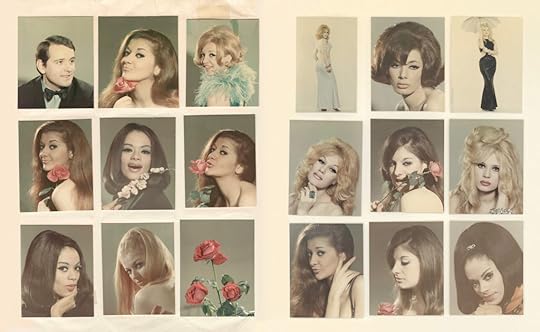 A page from a photo album for prospective clients of Foto Estudio Luisita
A page from a photo album for prospective clients of Foto Estudio LuisitaDumont-Gauthier: You spent ten years getting to know the sisters and their archive. What led you to turn this experience into a documentary?
Miraglia: The sisters wanted me to throw away all the negatives. They said no one was going to ask for their portraits anymore and that if they weren’t dead, they would prefer digital photos. Given this sentiment, I realized that it would be very challenging to convey the incredible contents of the archive in an exhibition or book. So I began thinking of ways to share what I felt was both a story and an archive that simply couldn’t fall into oblivion. That’s how I started to bring my camera and tripod to the studio, slowly and silently capturing the sisters in their daily routines and recording our conversations. It was around that time that I met Hugo Manso, a filmmaker who would become my partner. Together we filmed the sisters for almost four years, from 2014 to 2017, not knowing that what ended up being almost two hundred hours of recording would eventually become a documentary.
 Argentine dancer Katia Iaros, 1972
Argentine dancer Katia Iaros, 1972Dumont-Gauthier: How did the MALBA exhibition come about?
Miraglia: It all began with an exhibition of Madalena Schwartz [a Hungarian-born photographer who lived in Brazil] that took place at the Moreira Salles Institute [in Brazil]. The curators of the show contacted me because they were aware that images of trans women and other individuals from the entertainment world who were once perceived as “sexually dissident” constituted an important part of the holdings of Foto Estudio Luisita. The curators wanted to paint a picture of what was happening in the region in the 1970s and ’80s, and so the work of the sisters was featured in the Argentine section of that exhibition, along with images from the Archive of Trans Memory.
The show was then scheduled to go to MALBA at the end of 2021, and I was approached by the museum to collaborate on Temporada Fulgor, a smaller exhibition that would create an interesting dialogue with the Schwartz show. Foto Estudio Luisita held a very faithful mirror to the popular Argentine imagery of the day, so working with this historical archive, but reassessing it from a contemporary perspective, was of great interest to the museum.
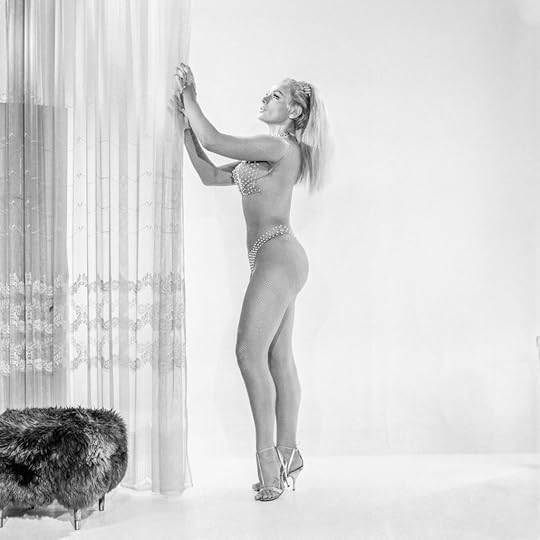 Argentine dancer Liana Dumaine, 1965
Argentine dancer Liana Dumaine, 1965Sofía Dourron: Given the great diversity of material the archive contains, the museum wanted to build an exhibition whose focus would be on the studio’s involvement in revue. From there, we developed a project that would allow us to pose multiple questions. The goal was to reintroduce Foto Estudio Luisita to the public in such a way as to explain its legacy and contributions to photography—a feat that involved a reassessment of the canon of modern and contemporary photography, and of the boundaries between the artistic and the commercial, institutions and margins. It also required the creation of a proper gaze and language to communicate the sisters’ work dynamic, especially in regard to the home/studio aspect of their practice, and how it impacted their construction of images, of vedettes in particular. It was important to us to convey how the affective, intimate, and personal universe that defined their home/studio functioned. Lastly, we wanted to explore how we could link these things to the cultural phenomenon that was the Argentine theatrical revue and the larger social and cultural context in which the sisters evolved.
For this reason, the exhibition was divided into two spaces that were designed as an “outside”—public space, the theater, and the circulation of retouched images, ready for mass consumption in programs, magazines, and on marquees, as well as photographs passed from hand to hand—and an “inside”: a more intimate and warmer space that is nonetheless a workspace. Moving through these zones, the public could begin to understand the universe of the sisters, the theater scene of the day, and the cumulative affective force of these images, which are part of our collective imagination and our identities as Argentines to this day.
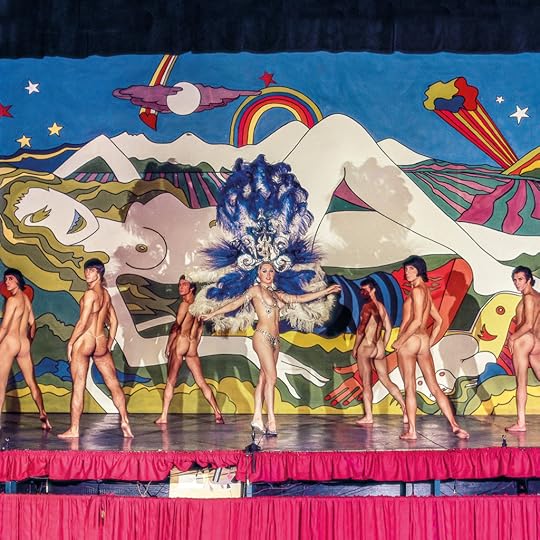 Argentine showgirl Adriana Parets in the piece Cena para amante (Dinner for lover), Teatro El Nacional, Buenos Aires, 1972
Argentine showgirl Adriana Parets in the piece Cena para amante (Dinner for lover), Teatro El Nacional, Buenos Aires, 1972Dumont-Gauthier: One could say that they were at the right place at the right time, but what do you think led them to capture the makers of the golden age of revue the way they did?
Miraglia: In 1958, a year before Luisita and Eva came to join her in Buenos Aires, Chela worked as a photo retoucher. As luck would have it, their home/studio was in the entertainment center of the city, where all of the most popular theaters were located. The neighborhood was basically of runway of stars, performers, and artists! In the early years, before they could afford to equip the studio to their needs, they mainly made a living developing and making prints for tourists. In time, once they had acquired enough fabrics and lights and were able to turn their living room into a proper studio space, they were able to reach a wide audience.
The archive tells the story of an encounter between the matriarchal world of the Escarrias—one that is inhabited by female immigrants, canaries, and small dogs—and the macho world of revue.
Their real break came through Marfil, a friend and Colombian singer who lived next door. He introduced them to Cuban actress Amelita Vargas, who was already a household name in Argentina. They became fast friends, and in turn, she introduced them to [actress] Juanita Martínez and her husband, [actor and comedian] José “Pepe” Marrone, who were two of the most important figures in revue at the time. The sisters made great photomontages of the couple, and the successful reception of those images opened the doors of the famed Maipo Theater for them. The rest is history.
Dourron: There was a network that gave them access to the theater world. As immigrant women, they could relate and establish bonds with other immigrants, like their neighbor Marfil, who, as Sol mentions, started the chain of encounters that would grant the sisters a space within Buenos Aires’s revue world. The sisters’ presence in theaters such as Maipo was not a coincidence, but rather the result of great talent, professionalism, and a recognized career.
Dumont-Gauthier: How does their work fit into the photo scene of the time?
Miraglia: While there were many studios at the time, few were run by women or had female lab technicians. In the case of Luisa, Chela, and their mother, Eva—immigrant women of African descent from Columbia—not only was it a fully female-run studio, it was also a very matriarchal space. The women spent most of their time at home, working long hours. Though they played an important role in the entertainment business of the day, their participation was almost entirely remote. They didn’t partake in the city’s nightlife. They also never integrated into the photo scene of the day, which was primarily made up of European photographers who had immigrated to Argentina in the first half of the twentieth century.
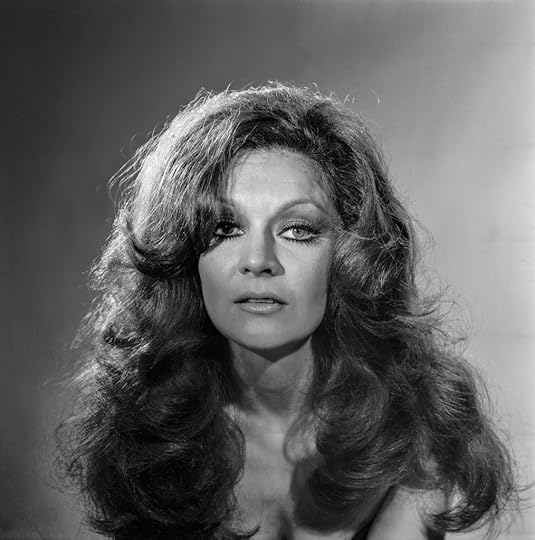 Argentine actress Ethel Rojo, 1973
Argentine actress Ethel Rojo, 1973Dourron: Because Luisita and Chela inherited a family trade, we can’t say that they were carriers of traditions, trends, or artistic movements outside of what they received from their parents. [Their father was a famous landscape photographer and their mother, an equally successful society portraitist.] Even when Luisita considered the photo schools in Buenos Aires, she felt there was little they could offer her. Her way of practicing photography, in Buenos Aires in particular, was also a form of living and surviving, a way to inhabit a world made up of all the people and objects that populated the space with them.
We can’t say that Foto Estudio Luisita participated in the photo scene of the day: the sisters remained on the margins, producing work only on demand, while building their own language and sensibilities within those parameters. I think we can think of them in a genealogy of female photographers who were part of a commercial circuit at the time, such as Annemarie Heinrich, who also photographed the Maipo stars for marquees and programs, or Olga Maza, another photographer whose legacy we have yet to explore and comprehend.
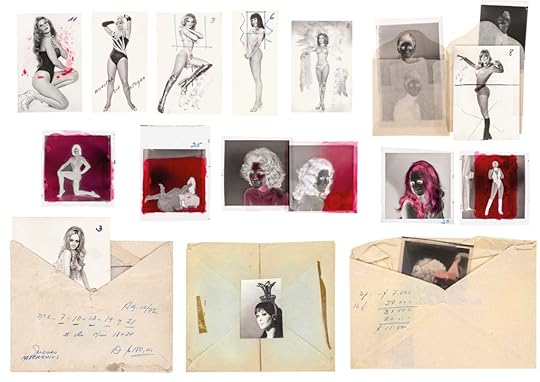 Archival materials from Foto Estudio Luisita
Archival materials from Foto Estudio LuisitaDumont-Gauthier: The theme of perfection and the ideal body is prevalent in their photographic practice. In the exhibition, we saw images where the props were not erased and negatives revealing Chela’s incredible retouching work with red ink. Why was it important for you to display this?
Dourron: The diversity of the material and the untouched negatives, or as we call them, the “complete negatives,” convey a great complexity of meanings and sensibilities that are intertwined with one another. We’re not only talking about a desire to reach perfection; these images also display the tensions at play between the demands of the industry, cultural stereotypes, photographic canons, and a domestic language. In that way, they open the door for us to think about photography as something collective that is built within a particular space and under established material conditions, and as a link between the people, the space, and the objects that inhabit each image. In the case of the material that the sisters might not have considered appropriate for commercial purposes, we see different ways of embodying photography. The archive tells the story of an encounter between the matriarchal world of the Escarrias—one that is inhabited by female immigrants, canaries, and small dogs—and the macho world of revue. In turn, that encounter existed within a turbulent period of transformation in regard to the ways in which bodies, sexuality, and gender were being perceived.
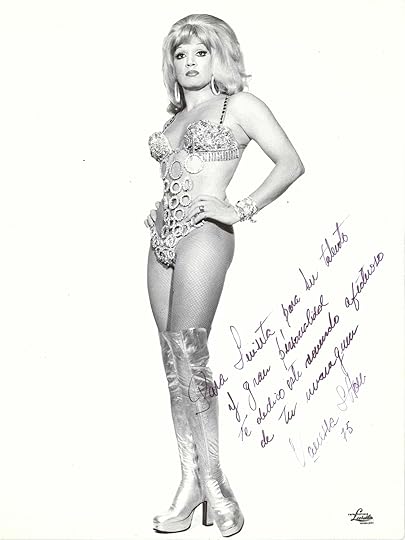 Autographed photograph of Argentine trans performer Vanessa Show, 1976
Autographed photograph of Argentine trans performer Vanessa Show, 1976  Photomontage of Argentine actress Pochy Grey and Teatro Maipo, 1972
Photomontage of Argentine actress Pochy Grey and Teatro Maipo, 1972 Dumont-Gauthier: While there was a focus on achieving perfection—as Chela says in the documentary, “Everything had to be done perfectly or not done at all”—the sisters also captured a changing way of conceiving of and consuming bodies, making room for sexualities then considered “dissident.” The photographs reveal the complex realities surrounding body politics, especially for women and transgender people, in what was still a very conservative, heteronormative, and patriarchal society marked by repression and violence. How did the studio manage to claim this marginal space and thrive the way it did?
Dourron: Luisita and Chela were very warm and open people. No one was ever denied entry to the studio. Everyone who passed through their door was treated with the same respect, warmth, and affection, and photographed with the same passion, commitment, and professionalism. In that way, portraits of [actress and sex symbol] Moria Casán and [the pioneering transgender performer] Vanessa Show were made with the same care. The goal was the same for everyone: to “extract” all the beauty that the person being photographed had to offer.
Related Items
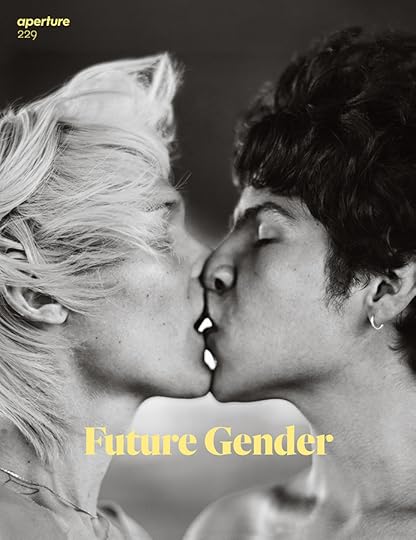
Aperture 229
Shop Now[image error]
Ethan James Green: Young New York
Shop Now[image error]The sisters did not discriminate based on gender, race, body, or sexuality, but I think that we have to remember that they operated within the revue world, which was a fairly complex phenomenon, especially during the dictatorship. It may sound surprising, but the military were regulars at the shows; they were admirers and even lovers of the vedettes, with whom they established bonds of all kinds. Someone who would have been oppressed in another public space—a trans woman or gay man, for example—was accepted within the context of the theater. On stage, these bodies could dance and delight the same military audience that would oppress them back in the streets: no longer protected by the boundaries of the theater, they had to go back into hiding and assume heterosexual norms in order to avoid anything from a beating to a night in jail, all the way to death.
I think we should also mention that the Escarria sisters did not conceive of their work through such a political gaze, nor were they trying to claim a space for themselves as public advocates for these individuals. They were doing their job in the best way they knew how—that is, in an affective, careful, and nonjudgmental way.
 Las gromas, 1973
Las gromas, 1973All photographs courtesy Foto Estudio Luisita
Dumont-Gauthier: While it was challenging for female photographers to make a name for themselves in the twentieth-century Argentine photo scene, some of the most important practitioners of that art were nonetheless women, including Grete Stern, Annemarie Heinrich, and Sara Facio. Along with them, the Escarria sisters captured a changing Argentine woman and society. Their archive and those of other female photographers contain stories and revolutions that are still unfolding to this day. What would you like the public to retain from the exhibition?
Dourron: Both the theatrical revue genre and the images that documented it belong to the field of the popular, and as such, they long eluded the cultural systems that have traditionally dominated both the fields of art and academia. Paradoxically, however, today these systems are actively looking for marginal archives and individuals, in an effort to bring back to light their languages and canons, which were hermetic for so long. The archive demonstrates the enormous contributions that revue and the sisters’ work made to our visual culture, to the formation of our collective identities, to the construction—and deconstruction—of our subjectivities and biases. From their humble beginnings in a world dominated by men, with silent force, they captured the stereotypes that Colombian and Argentine societies tried to impose on them. As they meticulously documented extraordinary scenes that they retouched to exhaustion, this duo, these image workers, continued to undo and deconstruct myths and mandates, including those of modern and contemporary photography.
Temporada Fulgor proposed a poetic and aesthetic exploration of images that for decades were only active within commercial circuits. The reassessment of the sisters’ body of work within the framework of contemporary artistic practices does not seek to erase or deny its popular essence, nor to paralyze it as a nostalgic fetish. Rather, the archive appeals to the renewal of a sensibility that is charged with meaning and anchored in the universe of work and production, in the exuberance and excess of the night, and in domestic tenderness. The archive contains a small revolution: the work of women who, through their daily actions, broke with the patriarchal mandates of their time.
Interview translated from the Spanish by Marina Dumont-Gauthier.
May 13, 2022
A Photographer’s Love Letter to Odesa
Odesa is a city of immigrants . . . In the city of immigrants, people who live in memory as if it is the present moment, the language resists time. Time doesn’t exist. In Odesa it is always Biblical time. The world is created and then we go eat apples. —Ilya Kaminsky, “Of the Language of Odesa”
Nasha. A word that in Russian means “ours” or “belonging to us.” When directed at another person, “ty nasha” is a sign of recognition, as in, “you’re one of us.” In 2008, I traveled to Odesa, the port city legendary for its writers, humor, gangsters, and flourishing secular Jewish community in a region that had historically been hostile to Jews. My mother emigrated from Kyiv to the US in the 1970s and met my Russian-Jewish father in Crimea shortly before he, too, emigrated. I was born in the United States, but the former Soviet Union was as much a part of my psyche, if not more so, than the place where I grew up. I’d traveled to Kyiv with my mother once before this trip to Odesa, but this was my first return to her homeland on my own. Eager to distinguish myself from my travel companions, I lit up when one of our local hosts overheard me speaking Russian and exclaimed, “Ah! Ty nasha!” But as the night wore on, and the party moved from restaurant to seedy bar to even seedier underground club, until we eventually tumbled out onto Primorsky Boulevard with the early morning sun beginning to streak the sky, I realized I wasn’t sure I did belong. We were the same age, we spoke the same language, but I had the privilege of a kind of innocence that they did not. I had grown up too far away—geopolitically and culturally. It would take time before this place and its people ceased being a dreamscape for my nostalgia and revealed themselves in all their nuance and intricate reality.


Photographer Yelena Yemchuk is a native of Ukraine and yet she herself was no less struck by the mystery of Odesa. Born in Kyiv, she emigrated to the United States with her family in 1981, when she was eleven years old. Emigration meant, she had assumed, saying goodbye to Ukraine forever. But the fall of the Soviet Union suddenly opened the borders for travel. Yemchuk found herself taking regular trips to Kyiv. “The country was in the crazy throes of growing pains and identity crisis,” she writes in the poignant afterword to her new photobook Odesa, recently published by GOST Books in the UK. She first visited Odesa in 2003 and found herself utterly mesmerized: “I felt like I had been shown a secret place. Like someone took me around a corner, pulled back a curtain and said, ‘Here look, look at this enchanted city. Believe in it, it’s real. You can be in it. Try to capture its magic. If you keep your eyes and your heart open, you just might be allowed to see.’” Yemchuk brings to bear the knowing intimacy of someone from within, alongside the wonder of an outsider, in her remarkable photographs.
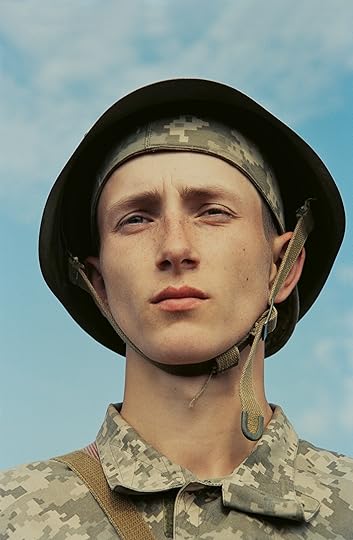
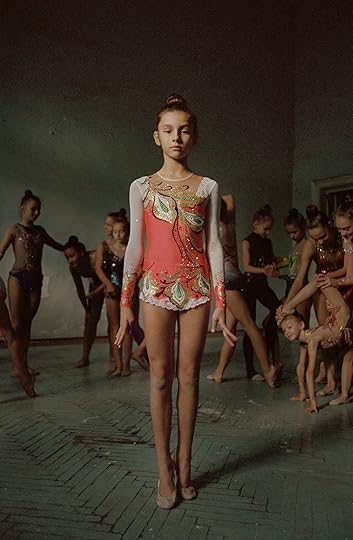
Originally slated to be published in 2020 and postponed by the pandemic, the images in the book were taken over the course of several trips to Odesa between 2014 and 2019. Yemchuk was obsessed with the city’s youth, their wildness, and their sense of possibility. What began as romantic fascination to live their coming of age as Ukrainians, denied to her, quickly turned into a chronicle of a pivotal historical moment. In 2014, in the wake of pro-Western protests in Maidan and the overthrow of then President Viktor Yanukovych, Russia purported to be coming to the aid of Russian separatists as justification for full-scale invasion and subsequent annexation of Crimea. Under the same pretext, in late 2014, Russia began its invasion of Ukraine’s eastern border in the Donbas. Yemchuk felt compelled to take portraits of the teenagers who were then beginning to volunteer for the army and training at the Odesa Military Academy. “I wanted to document the faces of these children going off to fight, but I quickly felt like the faces needed more context. So, I began to shoot everything. This book is that story,” she writes. Russia’s invasion of Ukraine this year, with Odesa under threat of missile attacks, has—to her utter disbelief—added another layer to that story. Most recently, on May 2, 2022, a fourteen-year-old boy was reported killed and a seventeen-year-old girl wounded in the bombing of a dormitory in Odesa, as Russian air raids also destroyed the city’s airport runway.

It is nearly impossible to look at these photographs without considering current events. In several close-up portraits, we see young people with bloodshot, world-weary, or distant eyes. This is a generation born after the fall of the Soviet Union, a time when the newly independent Ukraine was just beginning to relish its identity, its language, its freedom. Yet they seem haunted, unable to shake the past. “When you look at these faces, they have so much history in their look,” Yemchuk tells me. “You’re looking in the eyes of somebody who’s lived a much longer life. I’m attracted to that depth. When they’re willing to share that with you, it is the most beautiful thing.” Yemchuk herself is familiar with the experience of honing a new identity under the shadows of the past. One set of her grandparents were aristocrats killed by the Red Army, the other were killed in a massacre at Babi Yar, during the Holocaust. “How do you not give that to your children? It’s just engrained in you.”

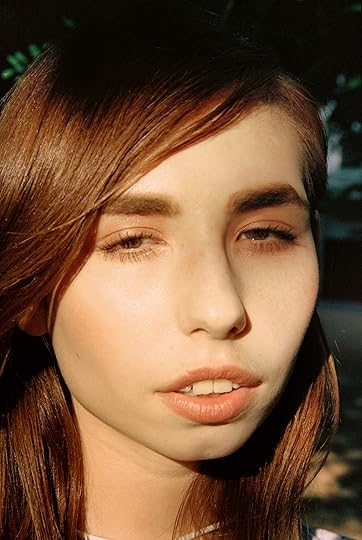
Despite that grim pall, the photographs also evince the vitality of a people who embrace pleasure precisely because they have known tragedy. This is the heart of Yemchuk’s obsession in a book she calls a love letter to the city—she insists on showcasing duality, whimsy alongside dissolution. “I don’t try to hide from the darkness, it isn’t shocking. There’s a darkness you accept as part of life. There’s history . . . hanging over it.” But, she adds, “There’s humor in the work as well. Surrealism, almost, absurdity . . . a nostalgic romanticism.” Indeed, many of the photographs feature an array of patterns and earthy colors that appear faded—Soviet-era bedsheets and wallpaper, domestic scenes in seeming disrepair. Yet these scenes are interwoven with others of women, in decadent costume, who stare into the camera with defiant confidence. These can seem brash, theatrical, but juxtaposed with a coquettish smile is a young girl in military uniform.
 All photographs by Yelena Yemchuk from Odesa, 2015–19 (GOST Books, 2022)
All photographs by Yelena Yemchuk from Odesa, 2015–19 (GOST Books, 2022)Courtesy the artist

Yemchuk says the city has always felt like a Fellini film. In one photograph, an elderly trio appear to be doing water aerobics with their heads emerging up from the water through multicolored inflatable pool floats wedged under a metal pole against the pool wall. They look like they could suffocate but instead they hang suspended in time. Eroticism throughout heightens the carnivalesque atmosphere. In one of the most striking photographs, a voluptuous woman lies sprawled out in the nude on a picnic blanket, head thrown back, eating a cherry as the fruit tumbles out of a pink plastic bag. She lies in a field with an apartment building, or the remains of one, in backdrop. How she got here or why is irrelevant. The moment is hers to indulge. “And then there is March again, and the world is alive again, also, for you. Because you are a part of it, and you cannot escape it, that world which is all about us, and who would want to escape it anyway, this wonder, this astonishment?” writes Ilya Kaminsky, a fellow Ukrainian émigré to the US whose poetry in the book engages the photographs in a disarming conversation. And yet where to find that wonder now, amid war, with the future still so unclear? “I always see light,” she insists. “The fact that people love their homeland, their people, their neighbors. They love this life, with its weirdness, with its darkness, with its humor. They love it and it’s theirs. That to me is incredible.”
Yelena Yemchuk’s book Odesa was published by GOST Books in May 2022.
Felipe Romero Beltrán Chronicles the Experiences of Young Immigrant Men in Spain
The southern Spanish city of Seville offers an utterly excessive amalgamation of Moorish architecture, Gothic iconography, and enough religious fervor to put a saint (or a saint’s name) on nearly every corner. In the photographs of Felipe Romero Beltrán, those details of historical layers and visual textures appear muted and subdued, distilled down to the corner of a bright yellow wall, an old column swallowed by concrete, or the mere glimpse of intricate woodwork on a heavy door. For a few years now, Romero Beltrán has been working on a series of images and related videos, titled Dialect (2020–ongoing), delving into the routines, memories, and experiences of a small group of young immigrants who crossed into Spain from Morocco as minors and are living in a refuge center, awaiting the normalization of their legal status.
The photographs include ruminative still lifes (blackened tomatoes, dried leaves on a table) and architectural curios (a painted-over pattern of bricks, resonant place names like Abu Yacub) as well as lively portraits of the young men (Youssef Elhafidi, Hamza Gharnili, and Bilal Siasse, among others) who appear, by turns, bored, exuberant, and reflective of their circumstances. The videos, more didactic in nature, document the palpable struggle that Romero Beltrán’s subjects endure when they try to read aloud from the first few pages of Spain’s immigration law, the prose leaden and opaque in any language. The remarkable sensitivity with which Romero Beltrán captures the lives of these young men—enmeshed as they are in the structures of the refuge center, the city of Seville, and the wider politicization of illegal migration to Spain—may have something to do with his own path, often precarious, from South America to Europe via a major detour to the Middle East.
 Felipe Romero Beltrán, Youssef’s escape route, from the series Dialect, Seville, 2020–22
Felipe Romero Beltrán, Youssef’s escape route, from the series Dialect, Seville, 2020–22  Felipe Romero Beltrán, Path to the refuge center, from the series Dialect, Seville, 2020–22
Felipe Romero Beltrán, Path to the refuge center, from the series Dialect, Seville, 2020–22 It’s not that you can adequately compare the Colombian civil war to the Palestinian-Israeli conflict and say that one is more dangerous than the other. It’s just that if you grew up accustomed to the forms of violence exchanged between, say, far-right paramilitaries and the left-wing militant group FARC, then you might not necessarily experience fear or even trepidation as an initial response to the idea of studying at a storied art school in Jerusalem. That’s how it was for Romero Beltrán, who was born and raised in Bogotá, arrived at the Bezalel Academy of Arts and Design in 2014, and spent a year and half there taking quizzical black-and-white pictures of blocked streets and barricaded houses in the middle of a territorial (and existential) struggle whose contours shifted without warning on a nearly daily basis.
West Bank (2014), the project that Romero Beltrán embarked on during his time at Bezalel, detailing the brutality and absurdity of imposing borderlines in labyrinthine urban environments, may not have been the work that catapulted him to international attention, but it did mark a crucial turning point. After Jerusalem, Romero Beltrán’s formidable training in classical documentary photography—which began at the Motivarte School of Photography, in Buenos Aires, a crucible of Argentinean photojournalism, and continues in Madrid, where he is currently writing a dissertation on the documentary tradition—expanded outward to embrace elements of performance and conceptual art. Dialect, with its insistence on complexity, theatrics, and mystery, has less in common with photojournalistic projects on asylum and illegal migration into Europe than it does with critical and philosophical inquiries such as Yto Barrada’s A Life Full of Holes: The Strait Project (1998–2004), Hassan Khan’s video installation Jewel (2010), and Bouchra Khalili’s The Mapping Journey Project (2008–11), all of which predate the current refugee crisis by several years.
 Felipe Romero Beltrán,
Bilal and Youssef wait for the end of the day
, from the series Dialect, Seville, 2020–22
Felipe Romero Beltrán,
Bilal and Youssef wait for the end of the day
, from the series Dialect, Seville, 2020–22Romero Beltrán first met the subjects of Dialect during a theater workshop, part of a project on inclusion, organized by the mother of his then girlfriend, now fiancée. His soon-to-be mother-in-law invited Romero Beltrán to speak with the group about his own experience as a migrant in Spain. Learning he was a photographer, some of the participants asked him to take a few pictures that they could use on social media and send home to their families. The boys were all teenagers at the time. Romero Beltrán’s collaboration with them evolved into an artwork as they entered adulthood.
Rather than presenting types, tropes, or tragic cases, Romero Beltrán’s images introduce viewers to the humorous quirks and wondrous specificities of Youssef, Hamza, Bilal, and other young men, named and almost knowable characters who, moreover, have a say in how the work is made and shown. Romero Beltrán always photographs with a digital camera and shares his pictures with his subjects. If they don’t like them, he trashes them. The ethics of how they work together are dynamic and sometimes complicated. But in a world flooded with depictions of atrocity, they are sound.
The sensitivity with which Romero Beltrán captures the lives of these young men may have something to do with his own path from South America to Europe.
Romero Beltrán’s series has grown beyond documentary to include staged pictures not only of images that the young men didn’t like and decided to repeat, but also of their past experiences, their dreams. One of the most striking photographs in the series shows the body of Bilal draped over the shoulders of two friends reenacting a moment when Bilal fainted during his journey from Tangier to Seville. Dialect has given its subjects a chance to relive some of the more difficult moments in their young lives, and, in doing so, in remaking the droop of a young man’s hips, the fall of his arm, the sight of his worried brow smoothing out, transform those moments into gestures of real beauty, of tension being poetically undone by novel forms of collective support.
 Felipe Romero Beltrán,
Fight between Hamza and Aziz.
, from the series Dialect, Seville, 2020–22
Felipe Romero Beltrán,
Fight between Hamza and Aziz.
, from the series Dialect, Seville, 2020–22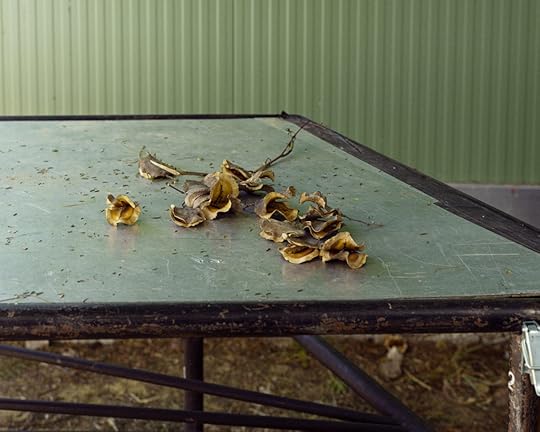 Felipe Romero Beltrán,
Found objects at a refuge center
, from the series Dialect, Seville, 2020–22
Felipe Romero Beltrán,
Found objects at a refuge center
, from the series Dialect, Seville, 2020–22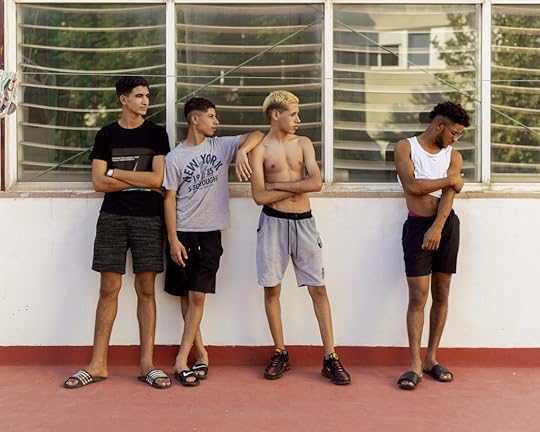 Felipe Romero Beltrán, Hamza arrives, from the series Dialect, Seville, 2020–22
Felipe Romero Beltrán, Hamza arrives, from the series Dialect, Seville, 2020–22All photographs courtesy the artist
Felipe Romero Beltrán is the winner of the 2022 Aperture Portfolio Prize. His solo exhibition of Dialect will be on view at Baxter St at the Camera Club of New York in summer 2022.
This piece will appear in Aperture, issue 247, “Sleepwalking,” under the column “Spotlight.”
Aperture's Blog
- Aperture's profile
- 21 followers



